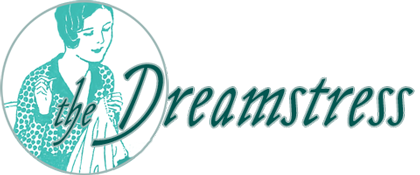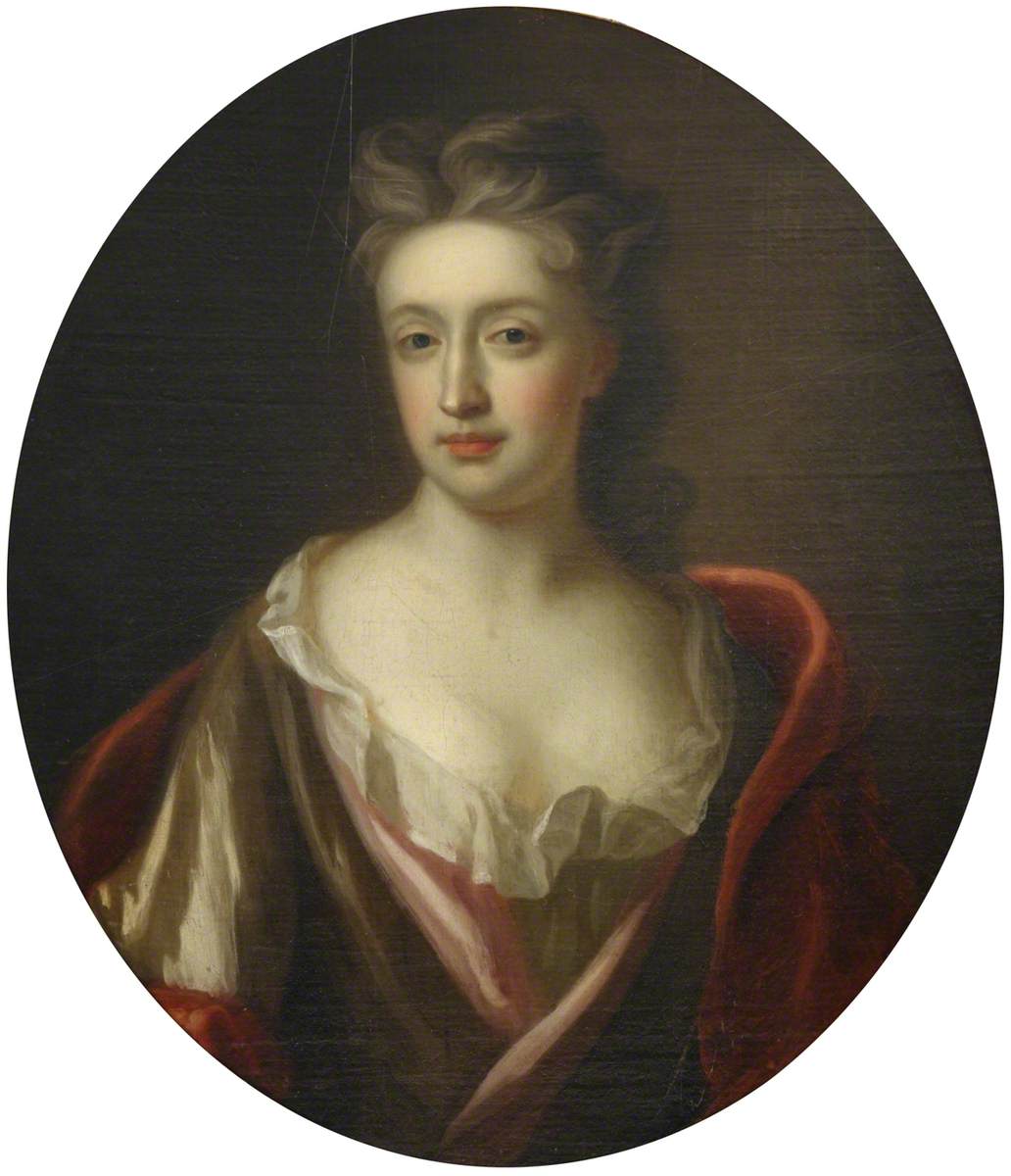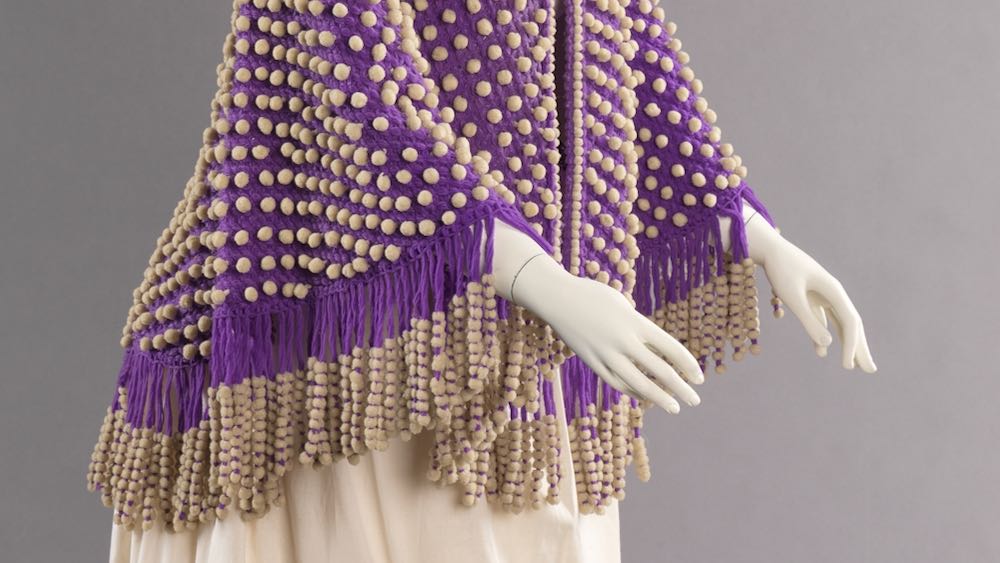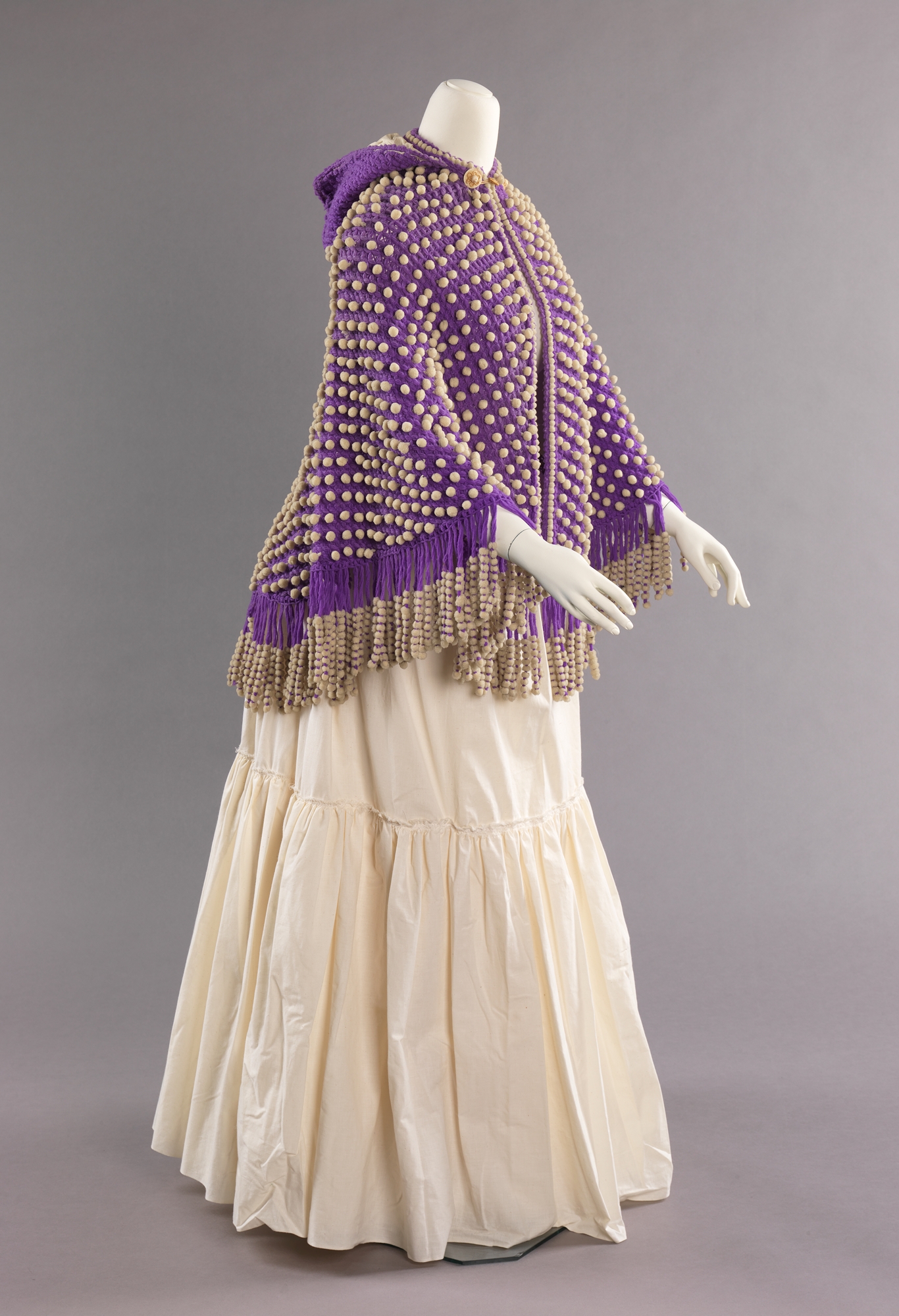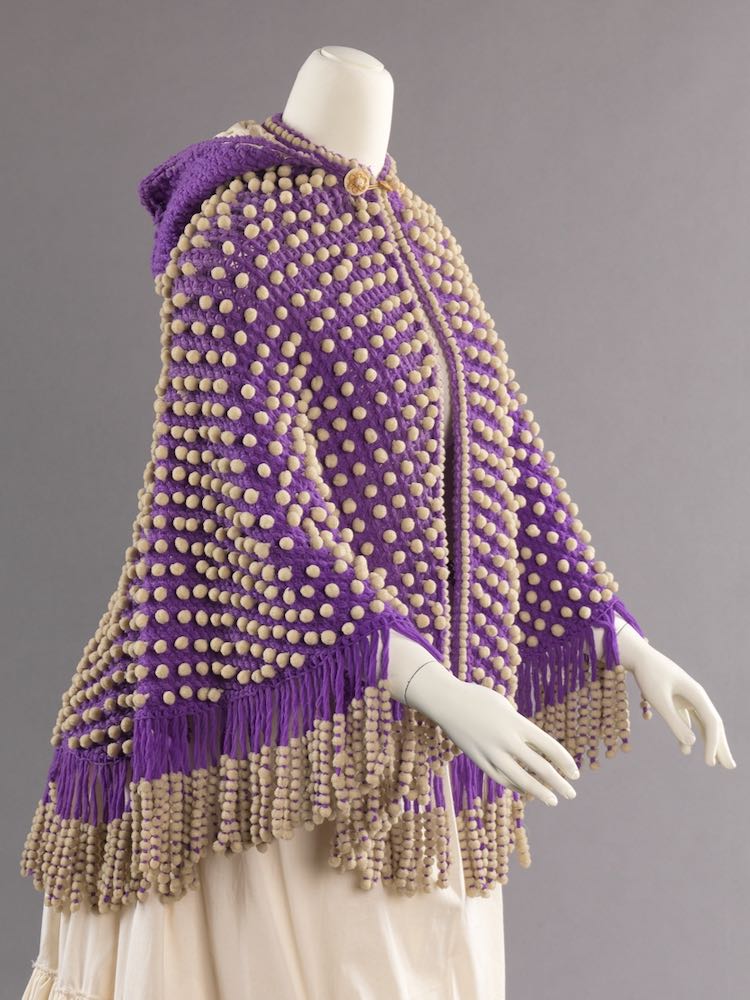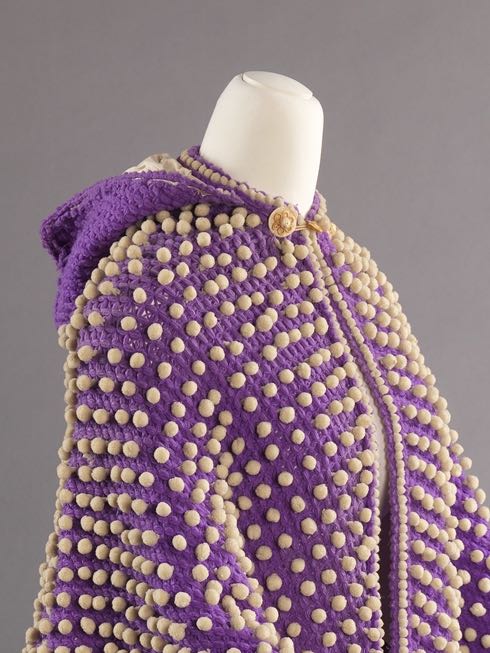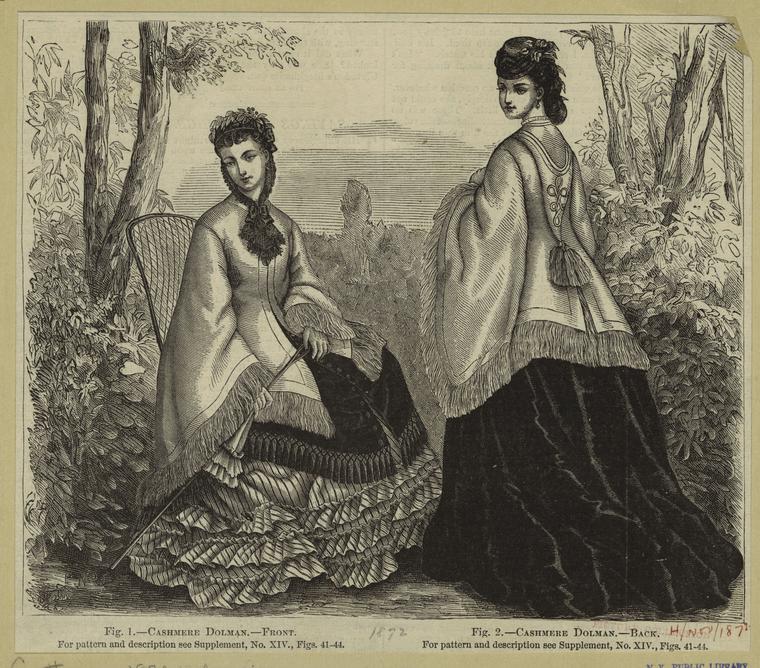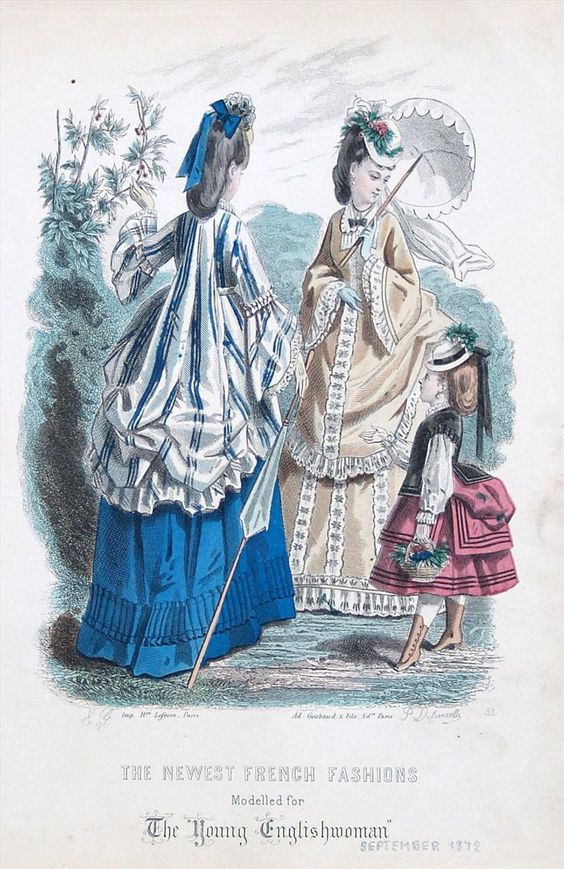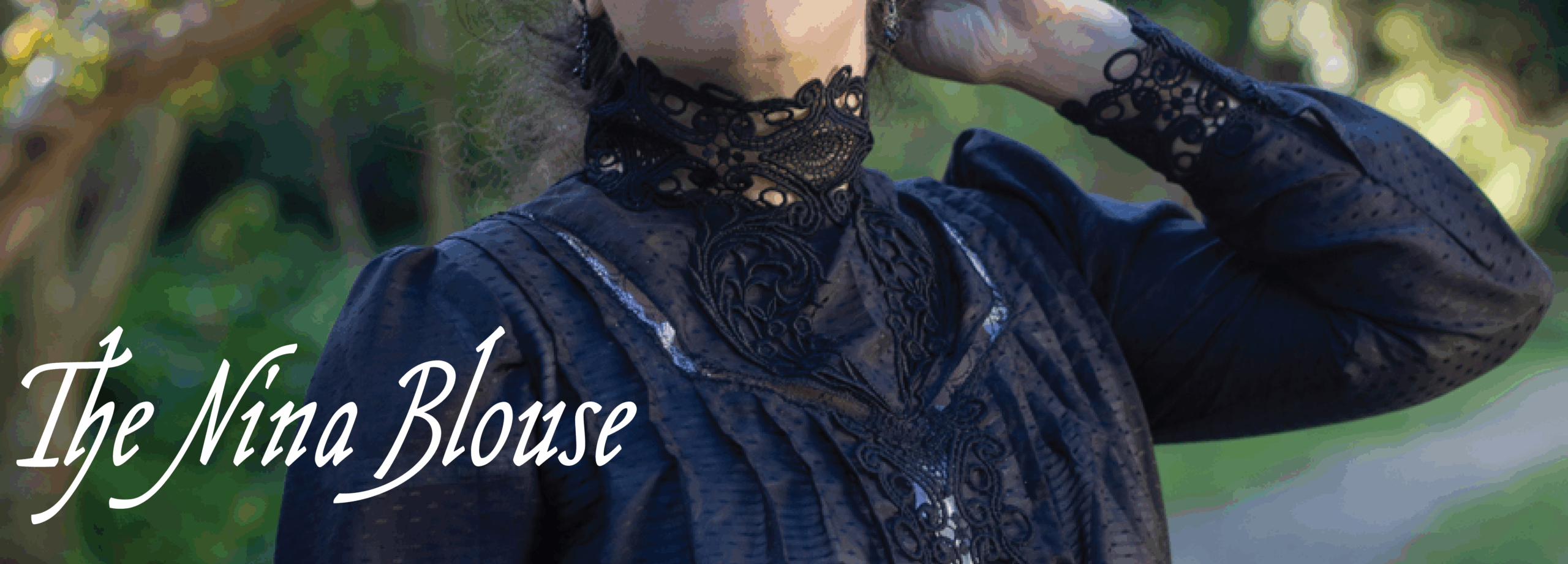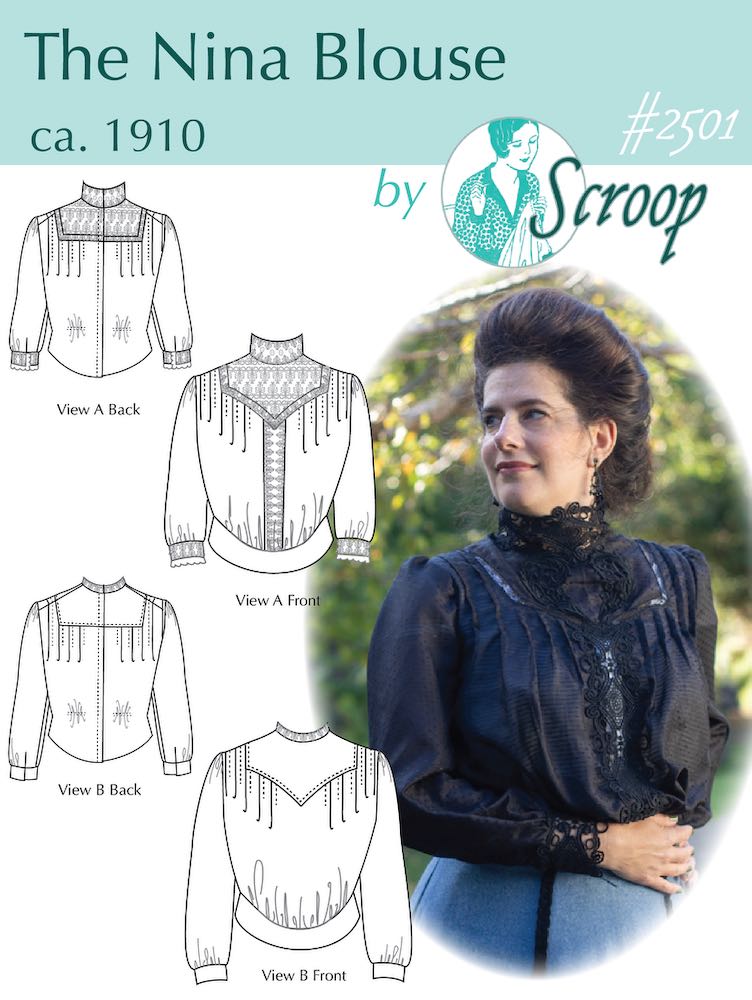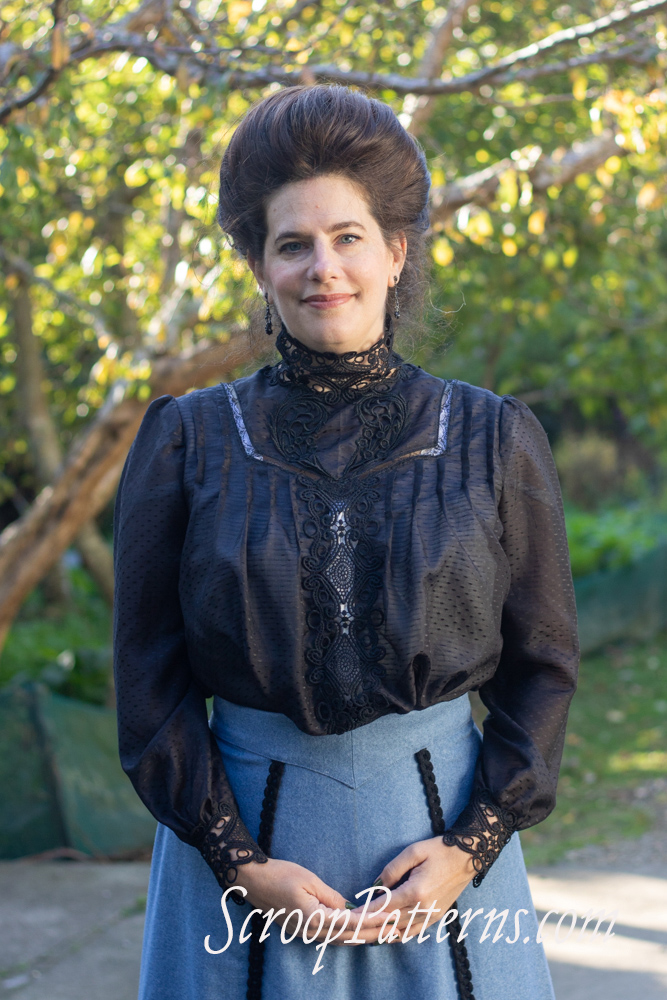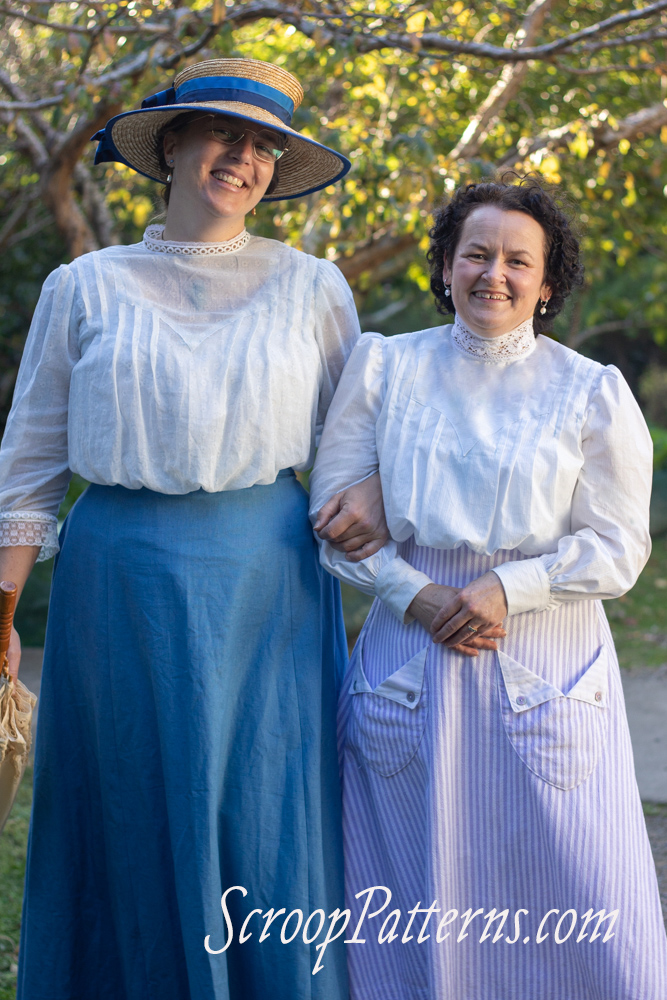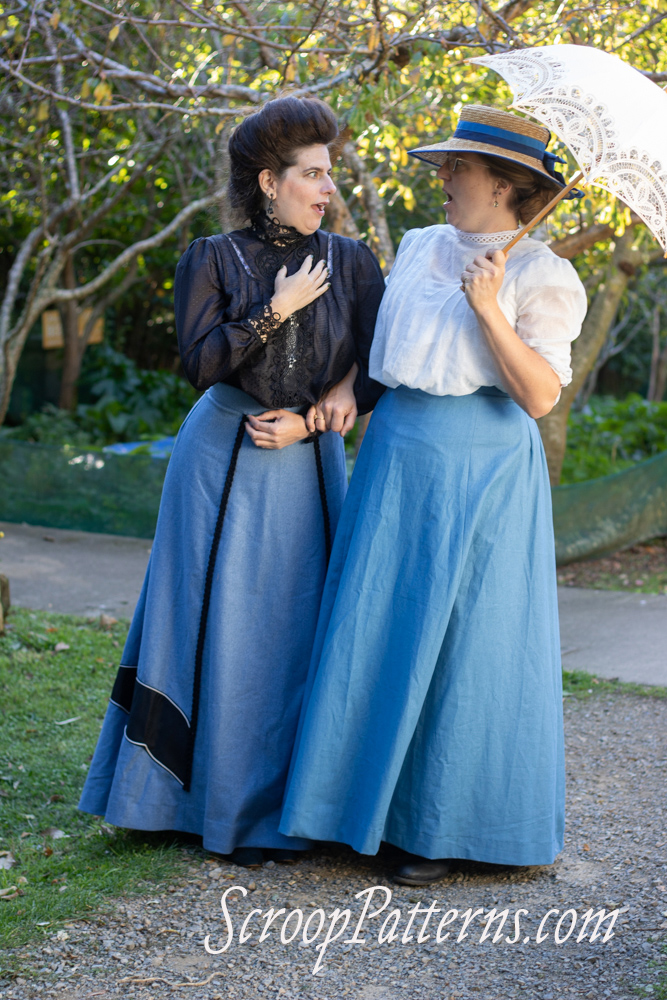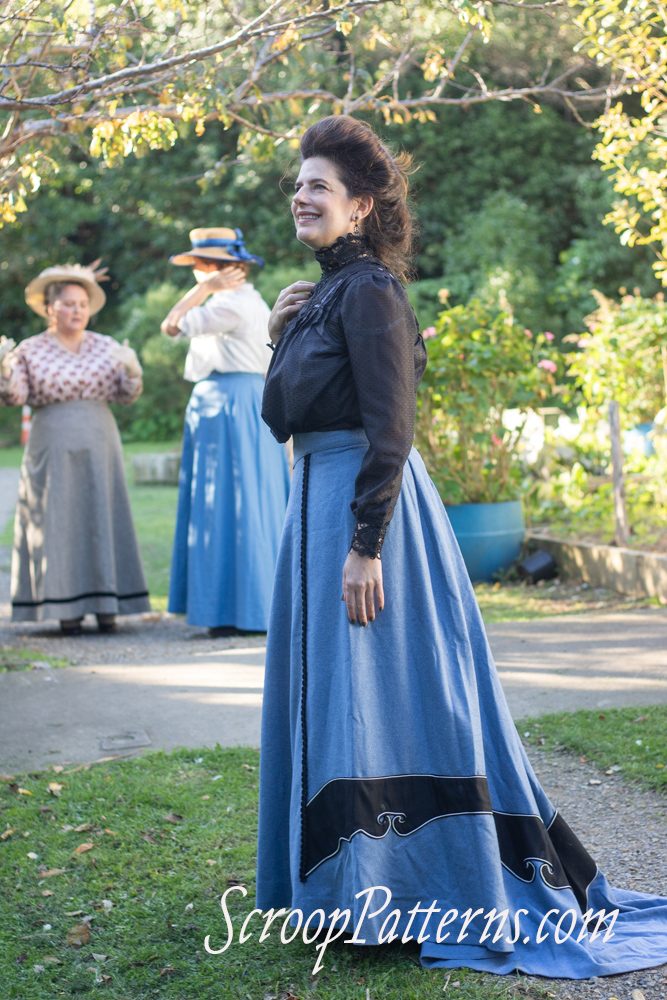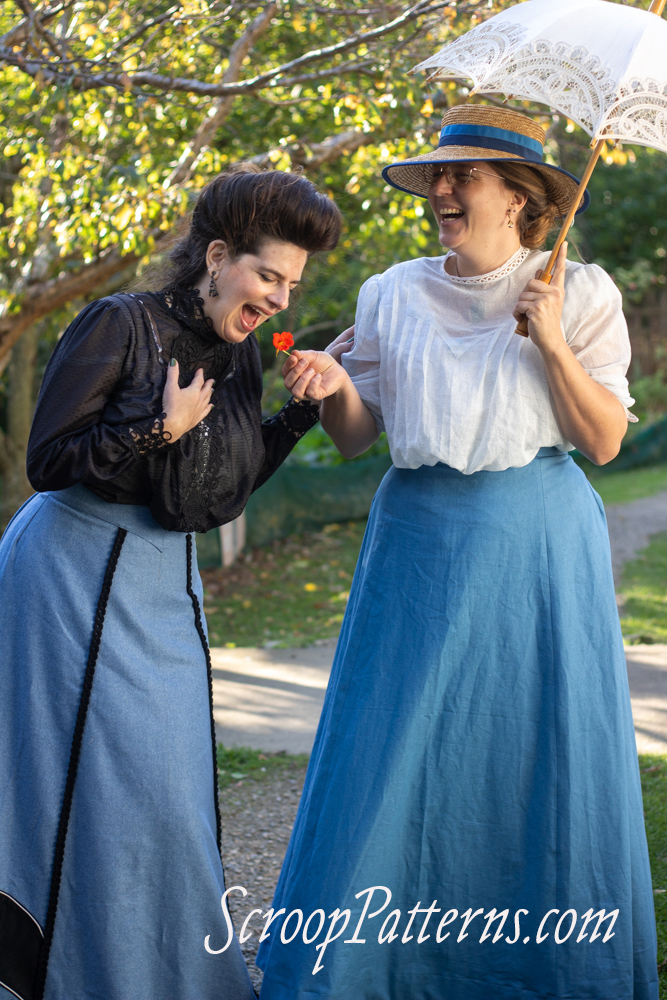Note: This post originally started as one that covered four decades of the 18th century. The more I researched the more I realised how much content there is, so I’ve broken the post up into decades, and am re-publishing it with more notes, and more images.
My posts on 18th century clothing in shades of purple, and the direction of stripes on 18th century sleeves, have been so popular that I thought you might enjoy a whole series on patterns and colours. You can learn so much by just looking at a bunch of images of clothes from any given era with one unifying detail.
Think Pink
For my first theme I picked pink.
What shades of pink were popular in the 18th century? Is there evidence those shades were more or less popular in certain decades, or mostly used on one type of garment?
Even if there are no clear trends, looking at all of the extant pinks and depictions of pinks is helpful for recreating garments and accessories using colours and patterns that look authentic. And who doesn’t love a bunch of pretty, pretty pinks?
As I began assembling images I realised two things almost immediately. First, almost every shade of pink possible shows up in extant 18th century garments and portraits. (yes, even hot pink!). Second, pink was far, far more common in 18th century clothing than purples was. Was it cheaper and easier to dye? Or, conversely, more expensive and thus more of a status symbol? Or were pink shades simply more fashionable throughout the century?
Because pink was so much more common, I’ve broken the pink post up into decades. So now you get to enjoy four (and maybe more (definitely more, I had to break it into individual decades, so now it’s 10(!))) weeks of 18th century pink posts!
I also got a bit clever and tried to post a painting or print of the time and then an extant item or two from the same time range in a similar shade of pink.
1700s Pinks
Extant textiles and paintings show a whole range of pink being worn in the first decade of the 18th century, starting with the palest barely-there pink of this riding habit:
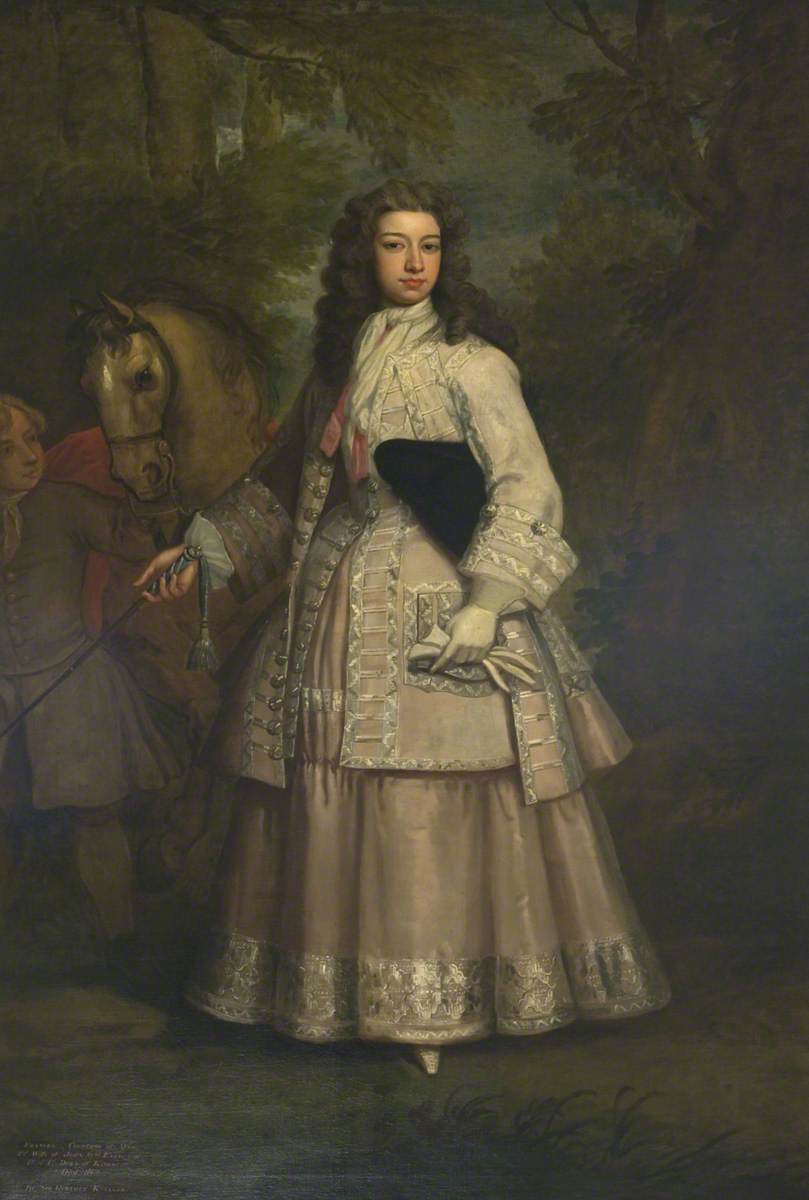
Kneller, Godfrey; Frances Pierrepont, later Mar, Daughter of Evelyn Pierrepont, 1st Duke of Kingston; The National Trust for Scotland, Alloa Tower; http://www.artuk.org/artworks/frances-daughter-of-evelyn-pierpont-1st-duke-of-kingston-195726
(shown on a woman with the most fascinating family connections. Her older sister was the amazing Lady Mary Wortley Montague, who authored the Turkish Embassy Letters and introduced smallpox inoculation to England, and she married John Erskin, 1st Duke of Mar, a major figure in the Jacobite Rebellion)
Here’s a slightly darker pink in the same family:
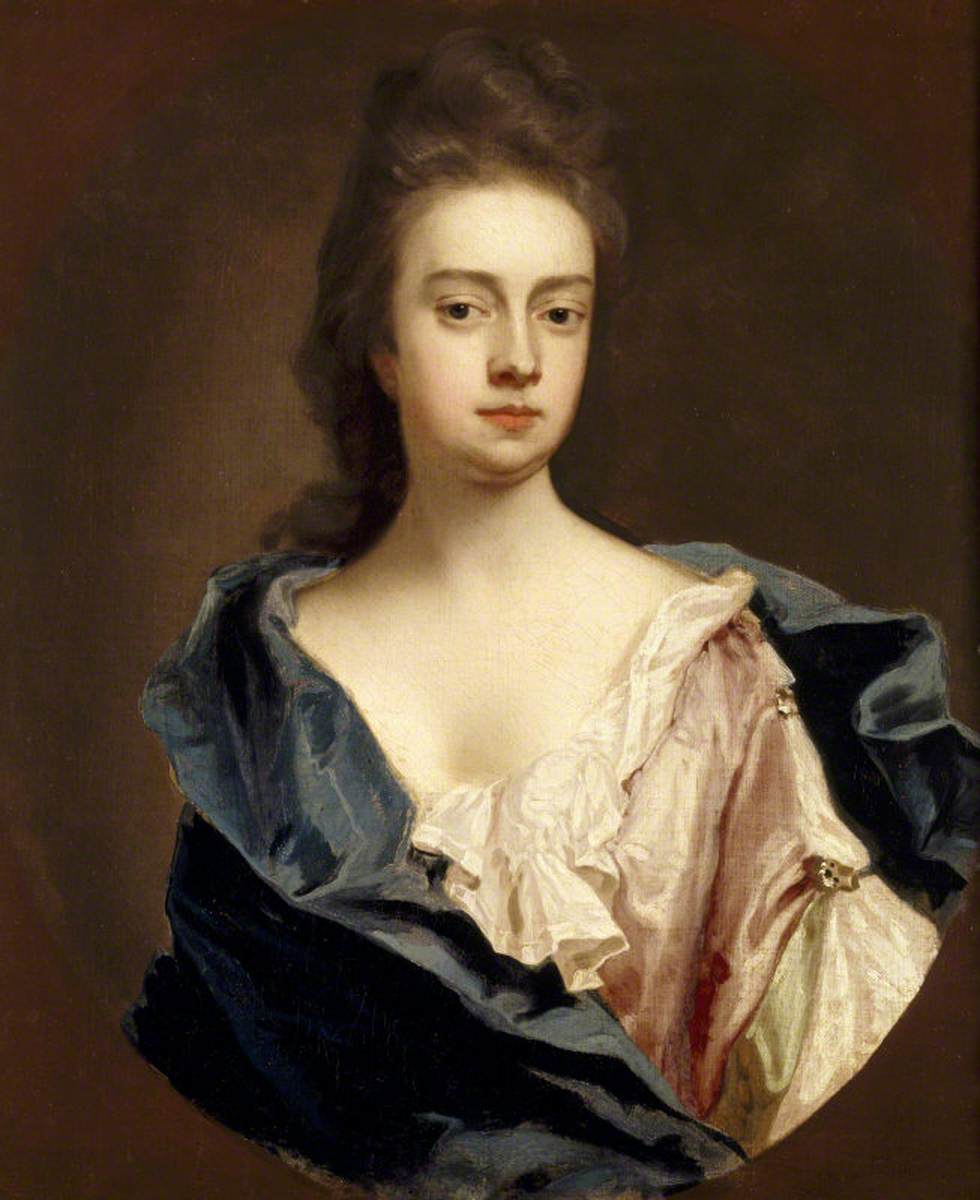
Michael Dahl I; Dorothy Yard (d.1723), Mrs Alexander Luttrell (?); National Trust, Dunster Castle; http://www.artuk.org/artworks/dorothy-yard-d-1723-mrs-alexander-luttrell-99762
And a textile with a central flower in the two shades shown above, as well as flowers in a number of other shades of pink:
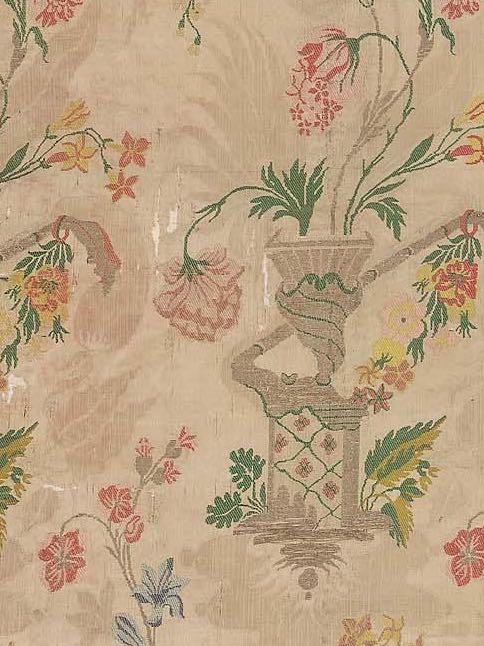
Textile fragment, possibly Dutch, silk satin damask brocaded with silk and metal wrapped thread, about 1700, MFA Boston, 96.420a
A fabric like this could have been used on walls, furniture, or, less commonly garments.

Textile fragment, possibly Dutch, silk satin damask brocaded with silk and metal wrapped thread, about 1700 MFA Boston, 96.420a
Here’s a beauty in blush pink with carmine ribbons in her hair
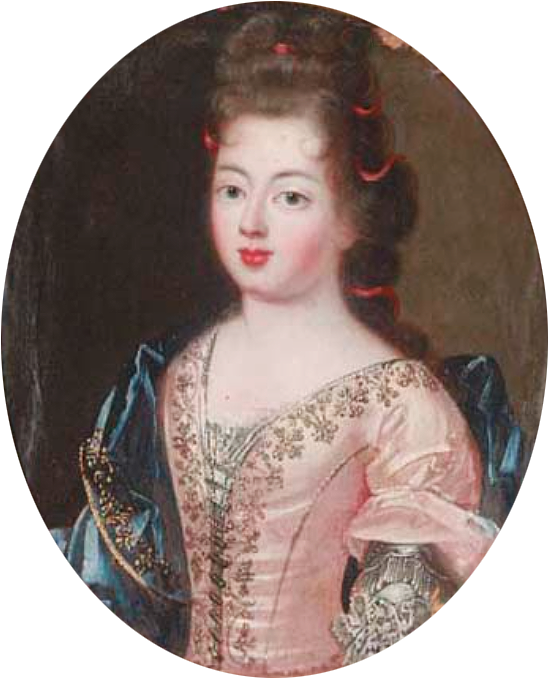
Follower of Pierre Gobert (1662–1744), Presumed portrait of Marie Louise Élisabeth d’Orléans (1695-1719), daughter of Philippe, Duke of Orléans. ca 1705
And an apron embroidered in blush:
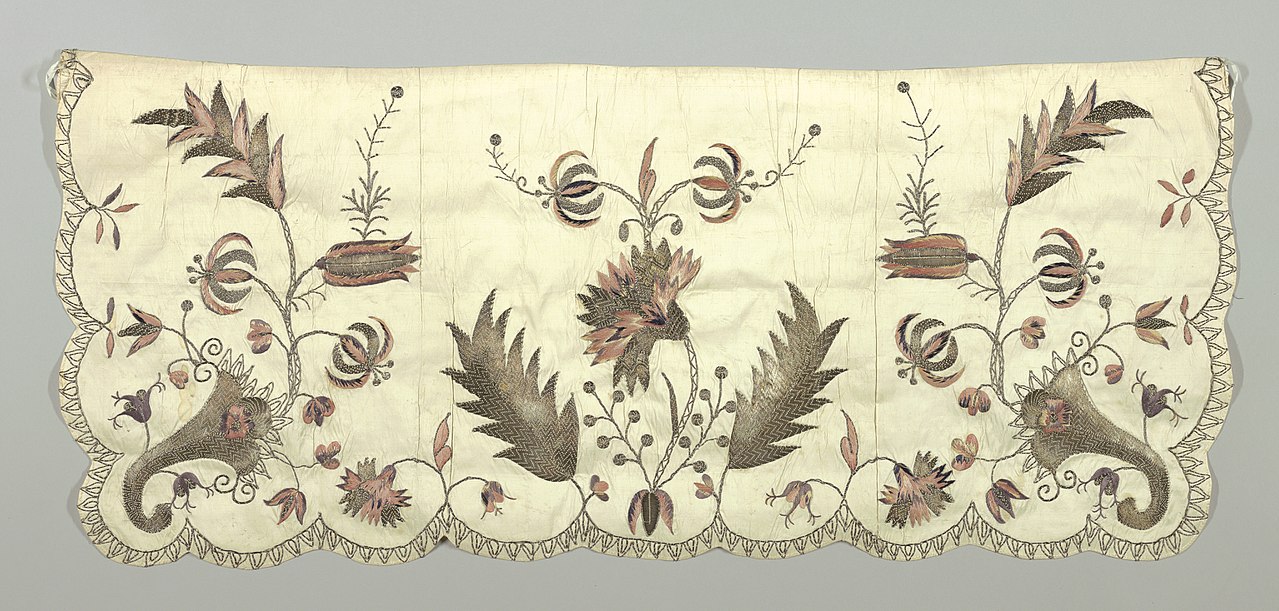
Apron (France), early 18th century Cooper Hewitt Design Museum, 18386997
Here’s a peach pink in the shot silk lining of Mary Mansel’s banyan :
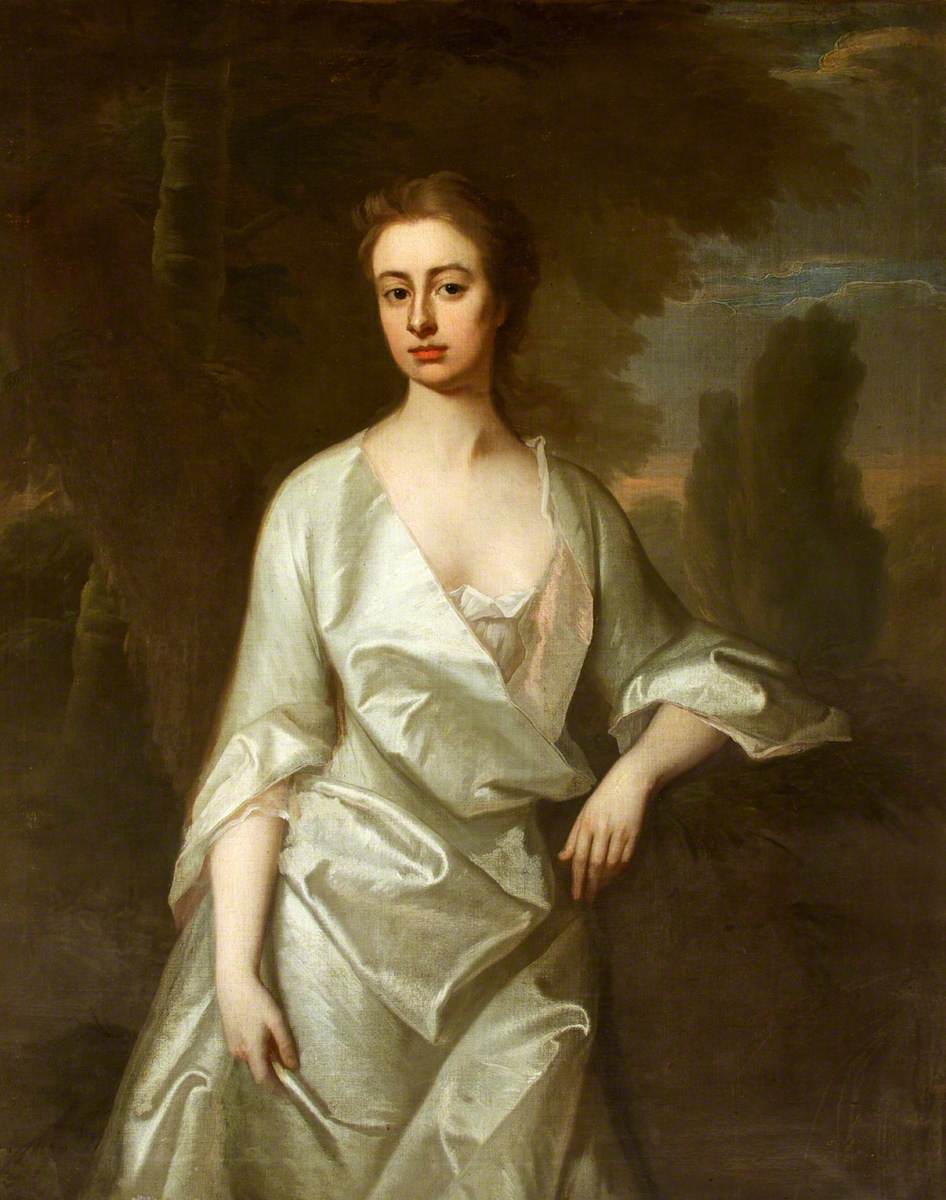
Michael Dahl I; The Honourable Mary Mansel, Mrs John Ivory Talbot; National Trust, Lacock Abbey, Fox Talbot Museum and Village
And an entire, rather fabulously bonkers, dress in peach:
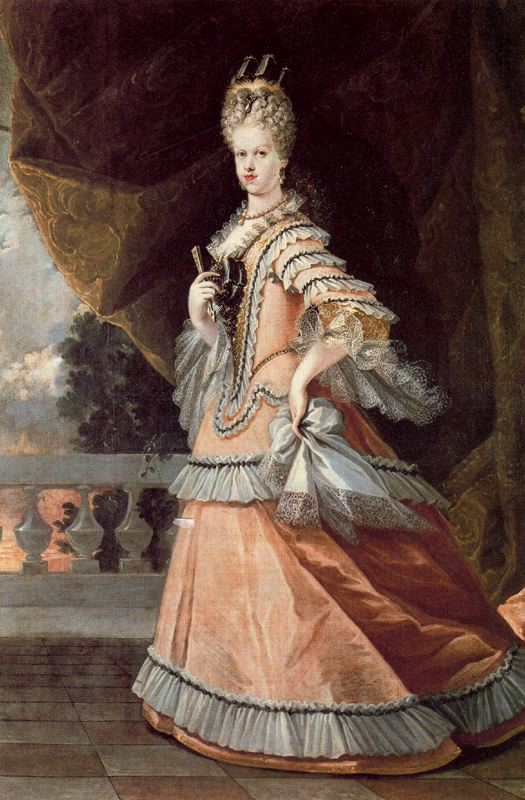
Miguel Jacinto Meléndez (1679–1734), Portrait of María Luisa Gabriela de Saboya. 1708. Colección del Marqués de Santillana. Palacio del Infantado. Guadalajara
This fabric is faded, but may have been a similar shade, or a brighter hue.
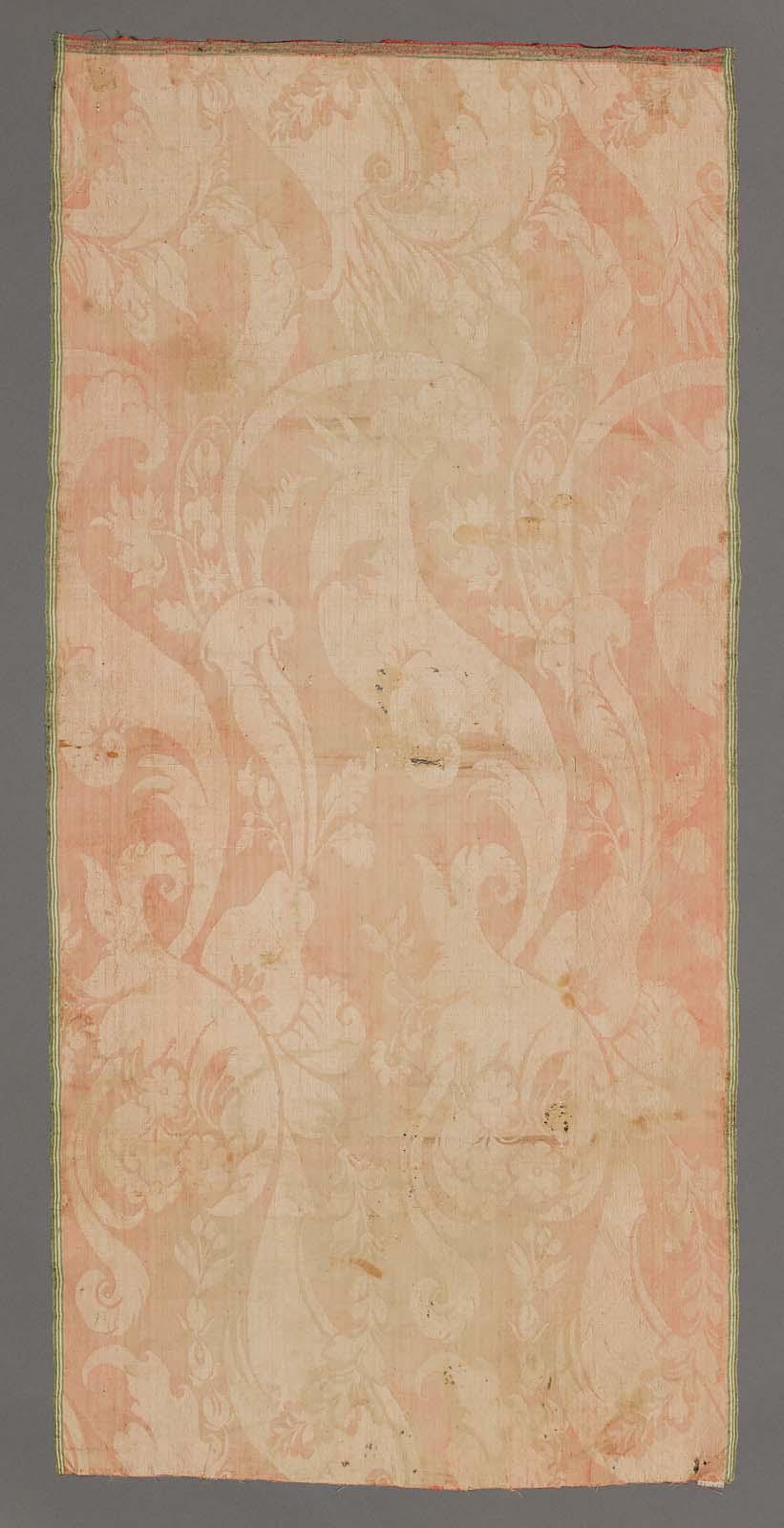
Length of silk damask, ca 1700 MFA Boston, 95.1050
And a darker version in the peach family:
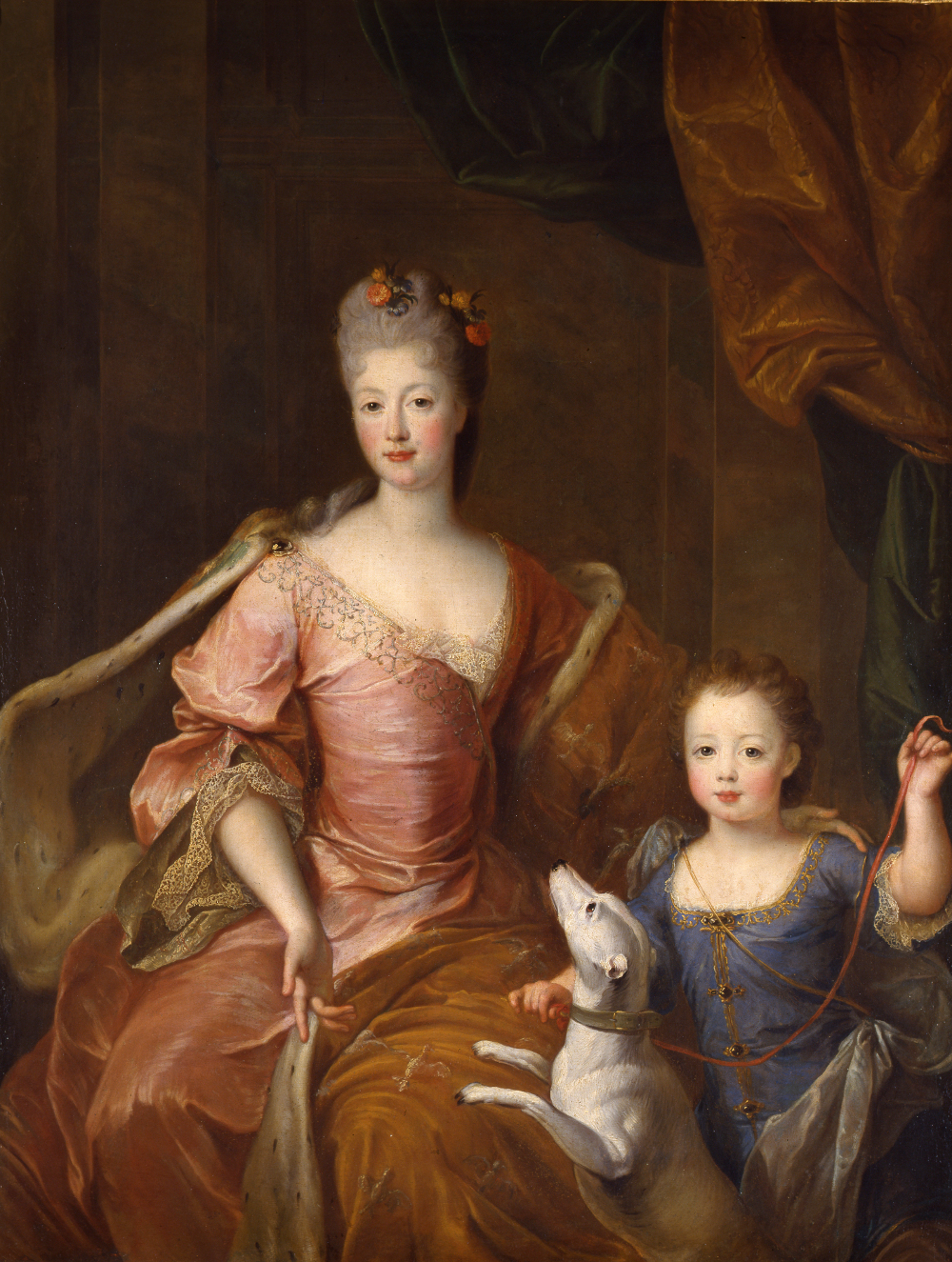
Pierre Gobert , Portrait of Élisabeth Charlotte of Orléans (1676-1744) with her oldest son, Louis of Lorraine (1704-1711)
And here’s a slightly clearer peach pink on a fabric:
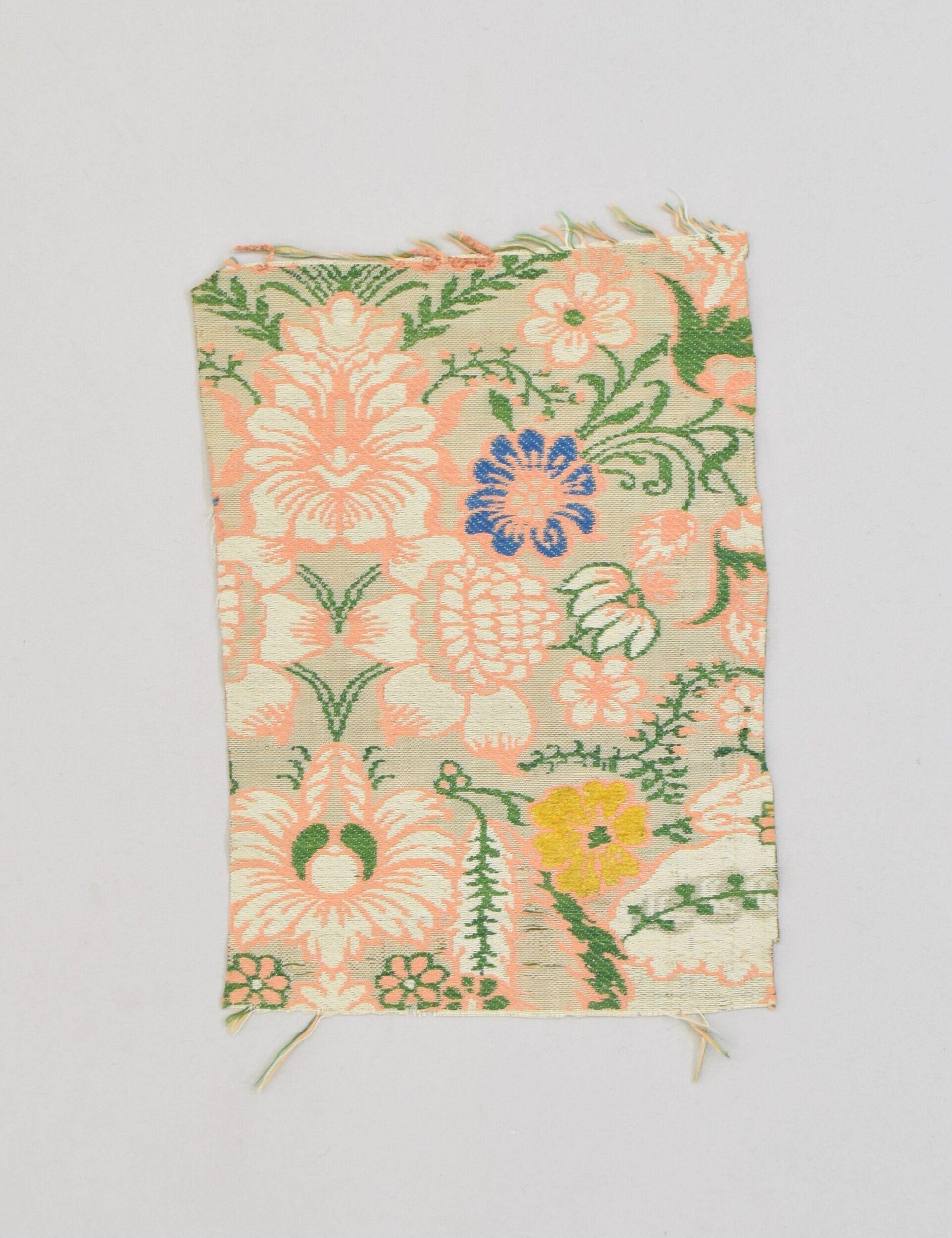
Woven silk, 1695-1710, French, Victoria and Albert Museum
Here are some more coral verging on salmon pinks:

Attributed to Pierre Gobert (1662–1744), Lady in Pink, ca 1700
And a fabulous bizarre silk in the same:
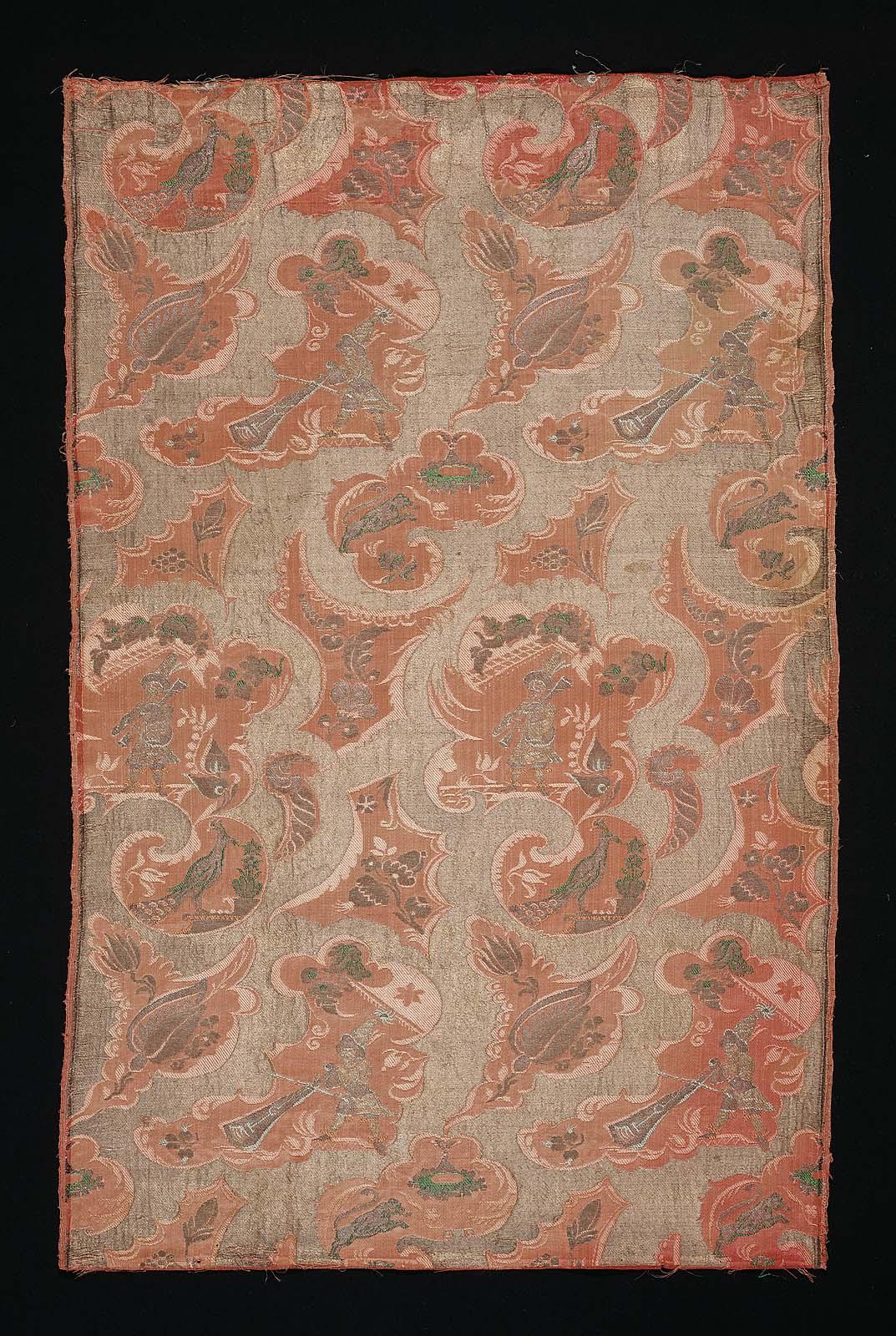
Length of brocaded silk, 1700, France, MFA Boston, 48.1168A
These shades seemed to have been particularly popular as linings:
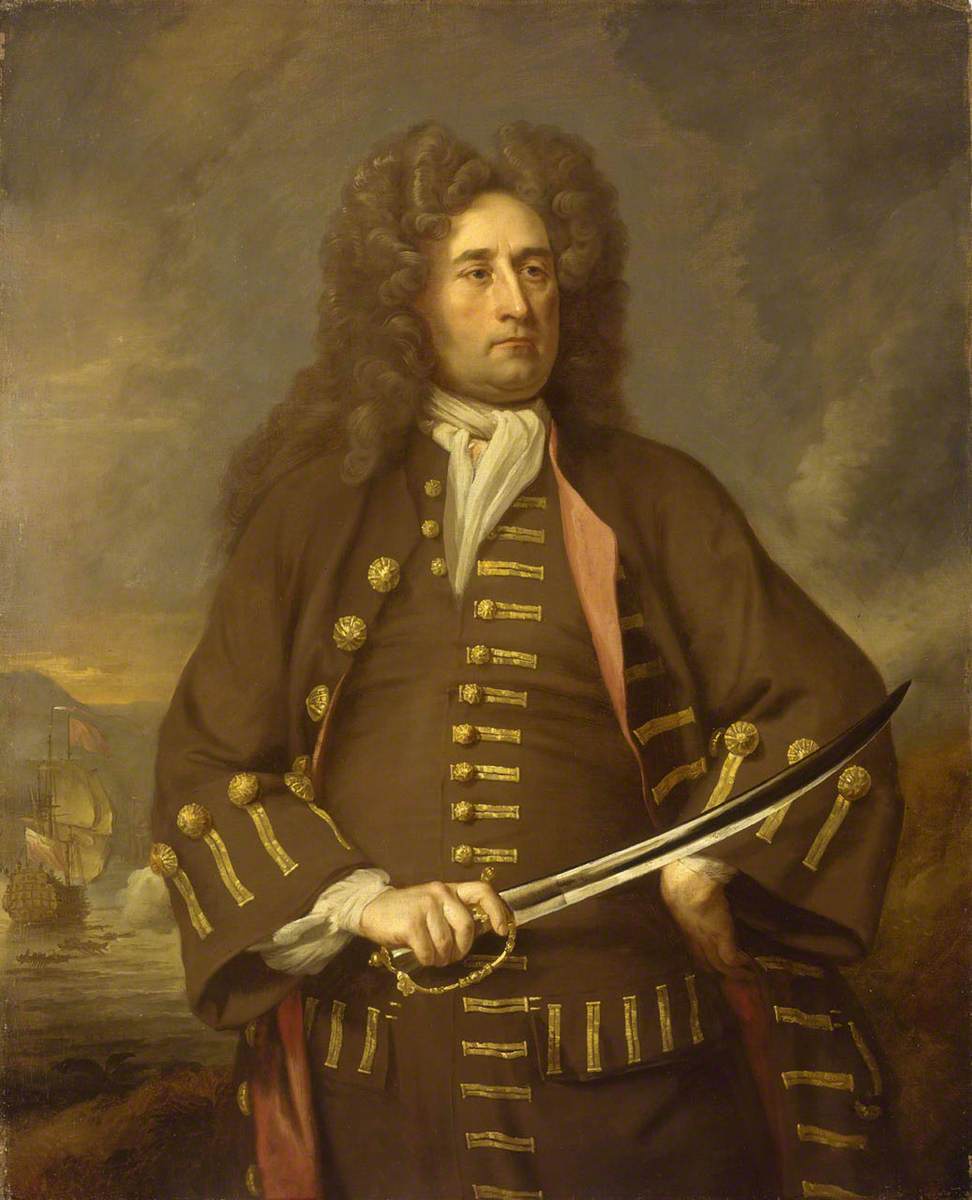
Michael Dahl I; Sir Thomas Hopsonn (1642-1717); National Maritime Museum; http://www.artuk.org/artworks/sir-thomas-hopsonn-16421717-173368
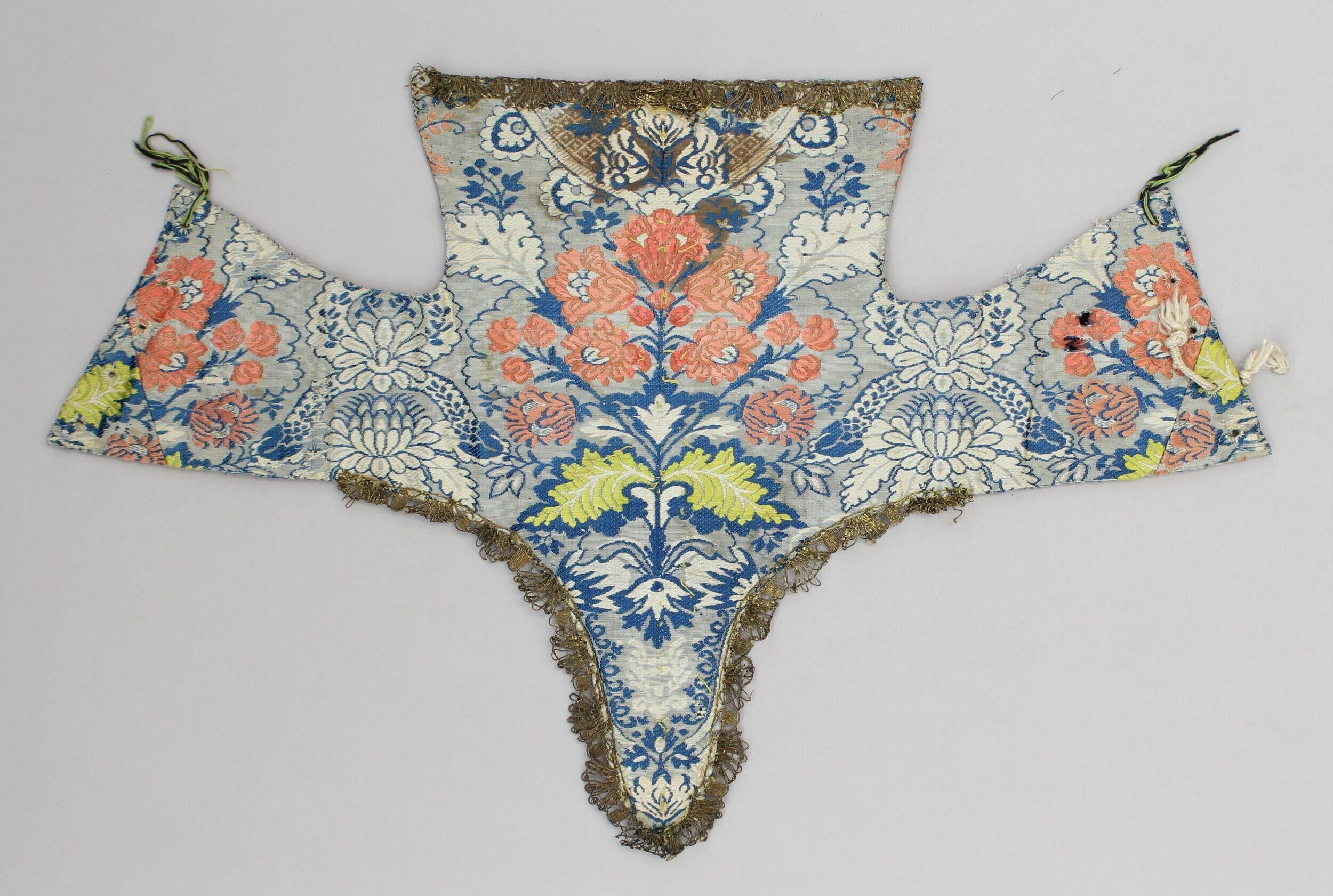
Stomacher (probably from an image robe) 1690-1710, French ? silk woven with a floral pattern, Victoria and Albert Museum
One shade of pink that shows up frequently across the 18th century is a soft pinky-lilac that could also arguably fit under the purple banner. It’s shown here on two elegant young girls and in a length of ‘bizarre’ silk (learn more about them here).
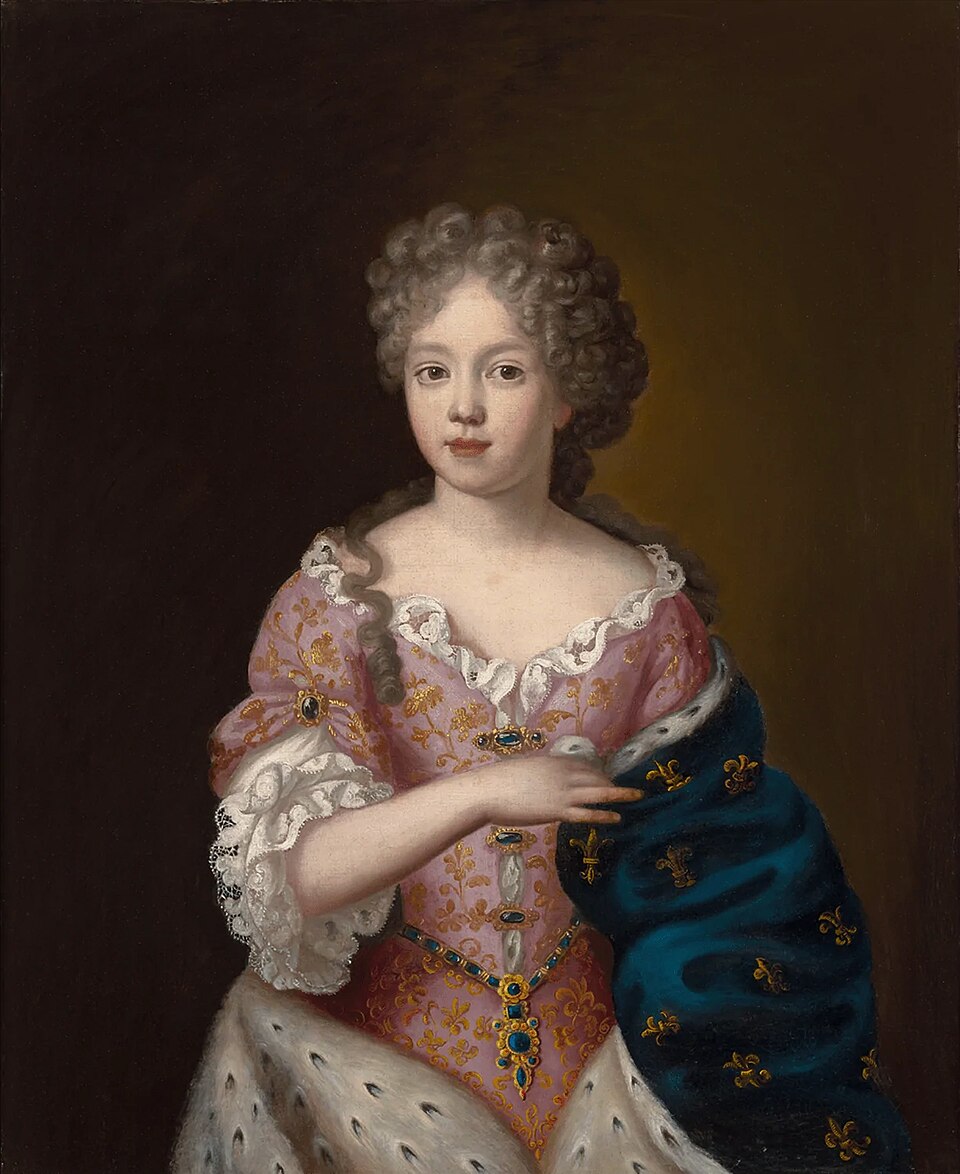
Follower of Pierre Gobert, Portrait possibly of Élisabeth Charlotte of Orléans (1676-1744), niece of Louis XIV
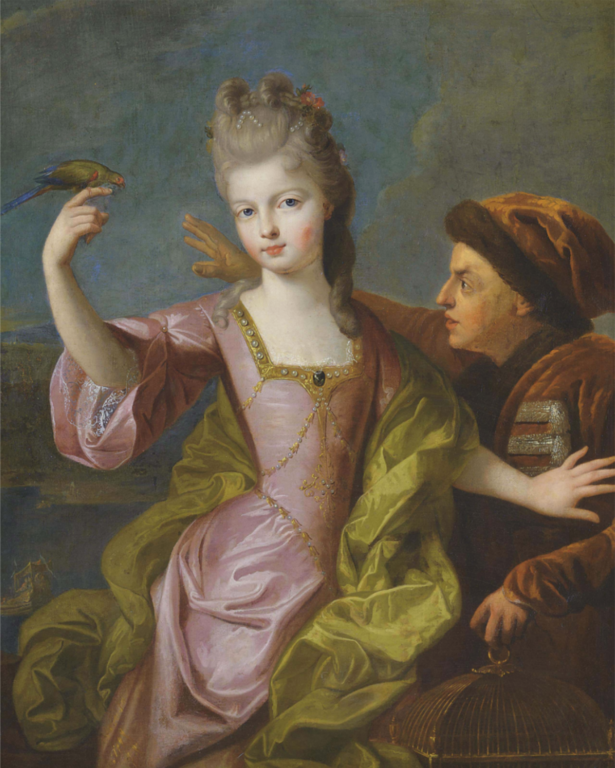
Circle of Pierre Gobert (1662–1744), Portrait of a young girl in a pink satin dress protecting her biseleur from a birdkeeper, late 17th century or early 18th century
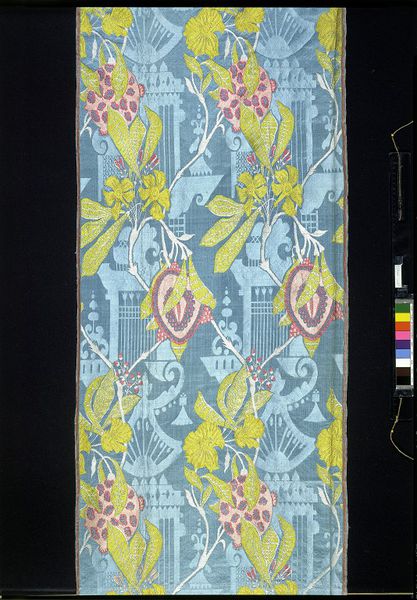
Dress fabric, Spitalfields, England, ca. 1708, Brocaded silk damask, Victoria and Albert Museum, 711-1864
I’ve cheated ever so slightly by picking a late 17th century muff to match these two young men and their snazzy pink neck ribbons, and Nicolas in a significantly less formal outfit. I just thought showing ribbons to go with ribbons was too good of an opportunity to pass up on.
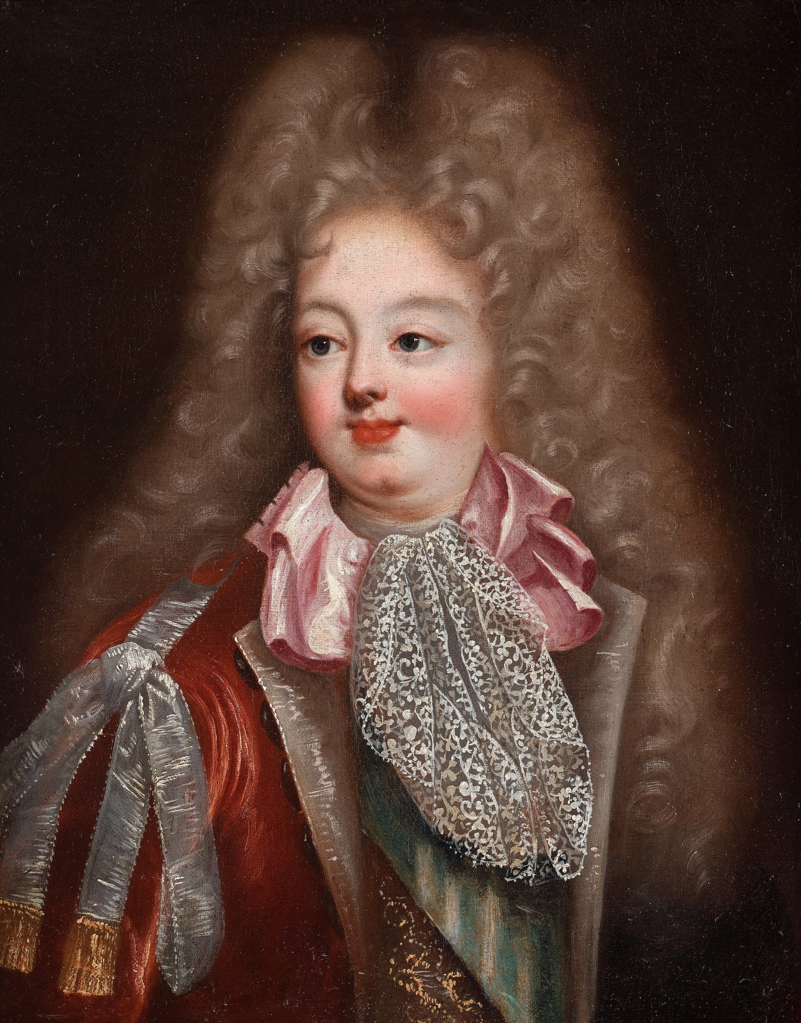
After Pierre Gobert – Portrait of a young gentleman ca 1700

After Pierre Gobert – Portrait of a young gentleman ca 1700
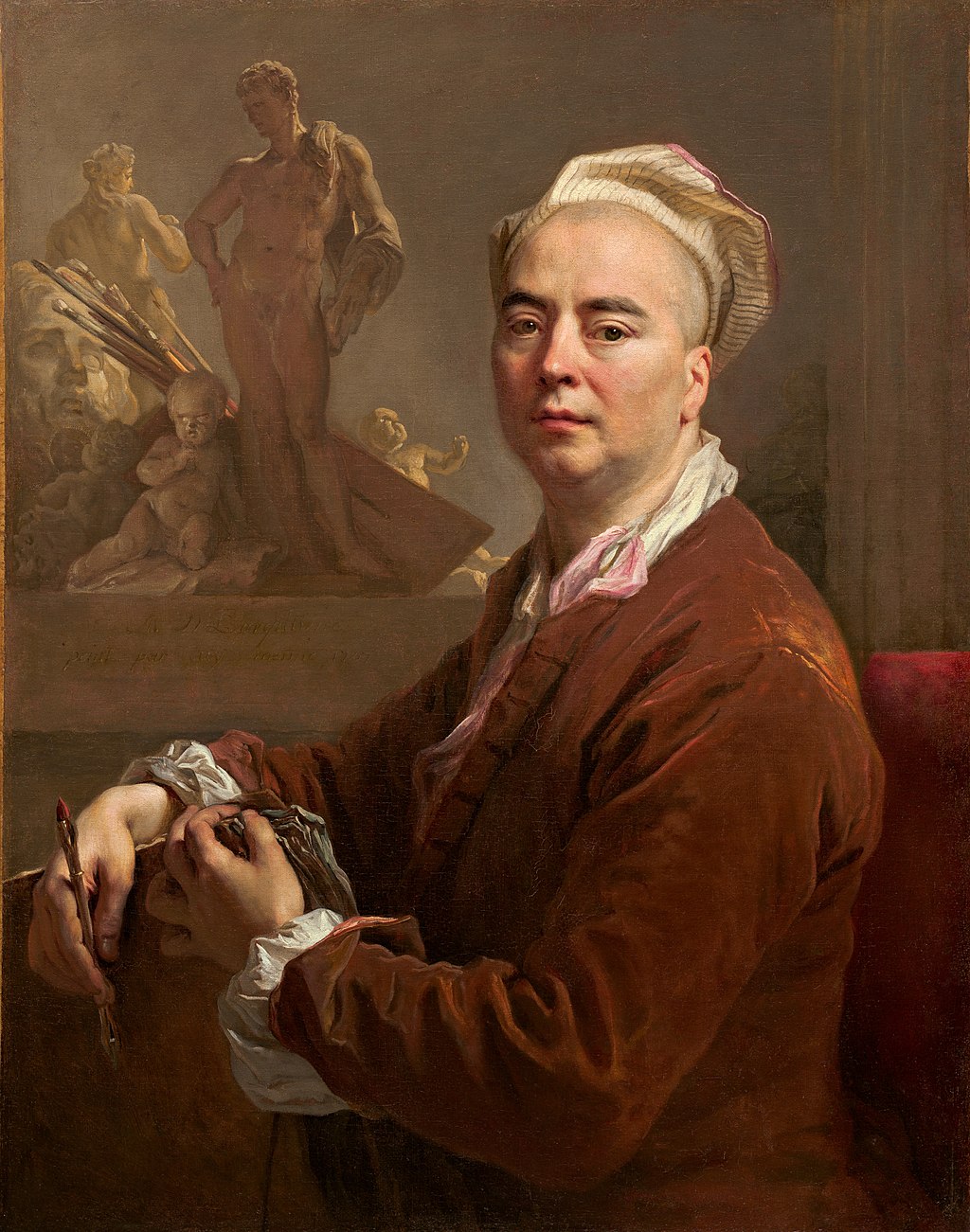
Self-Portrait of Nicolas de Largillière, 1707, National Gallery of Art, Washington DC
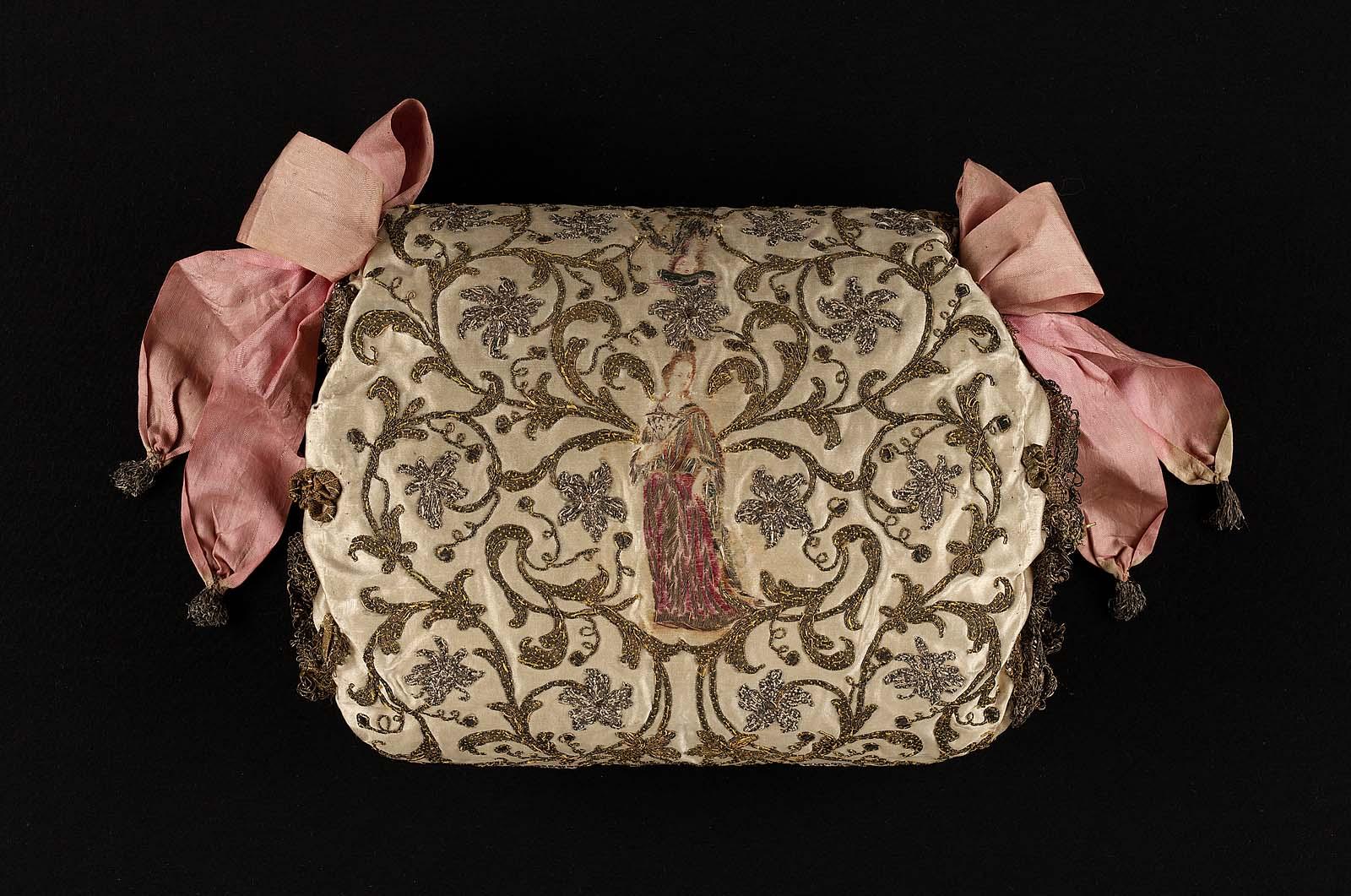
Muff French about 1680–90, France, MFA Boston 38.1266
The classic pink hue of the ribbons shows up in whole cloth too:

Attributed to Pierre Gobert – Portrait of a lady in pink with flowers, ca 1700
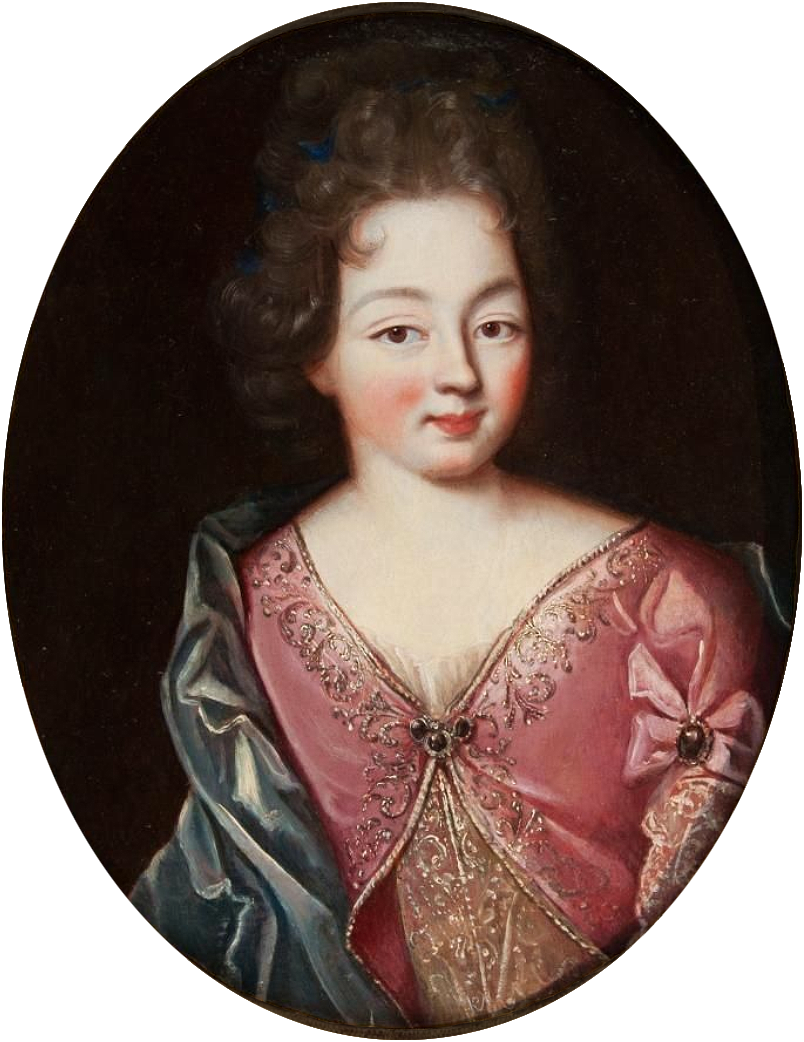
Circle of Pierre Gobert (1662–1744, Portrait of a young noblewoman, turn of the 17/18th century
And heres a floral brocade in the same family of pink:
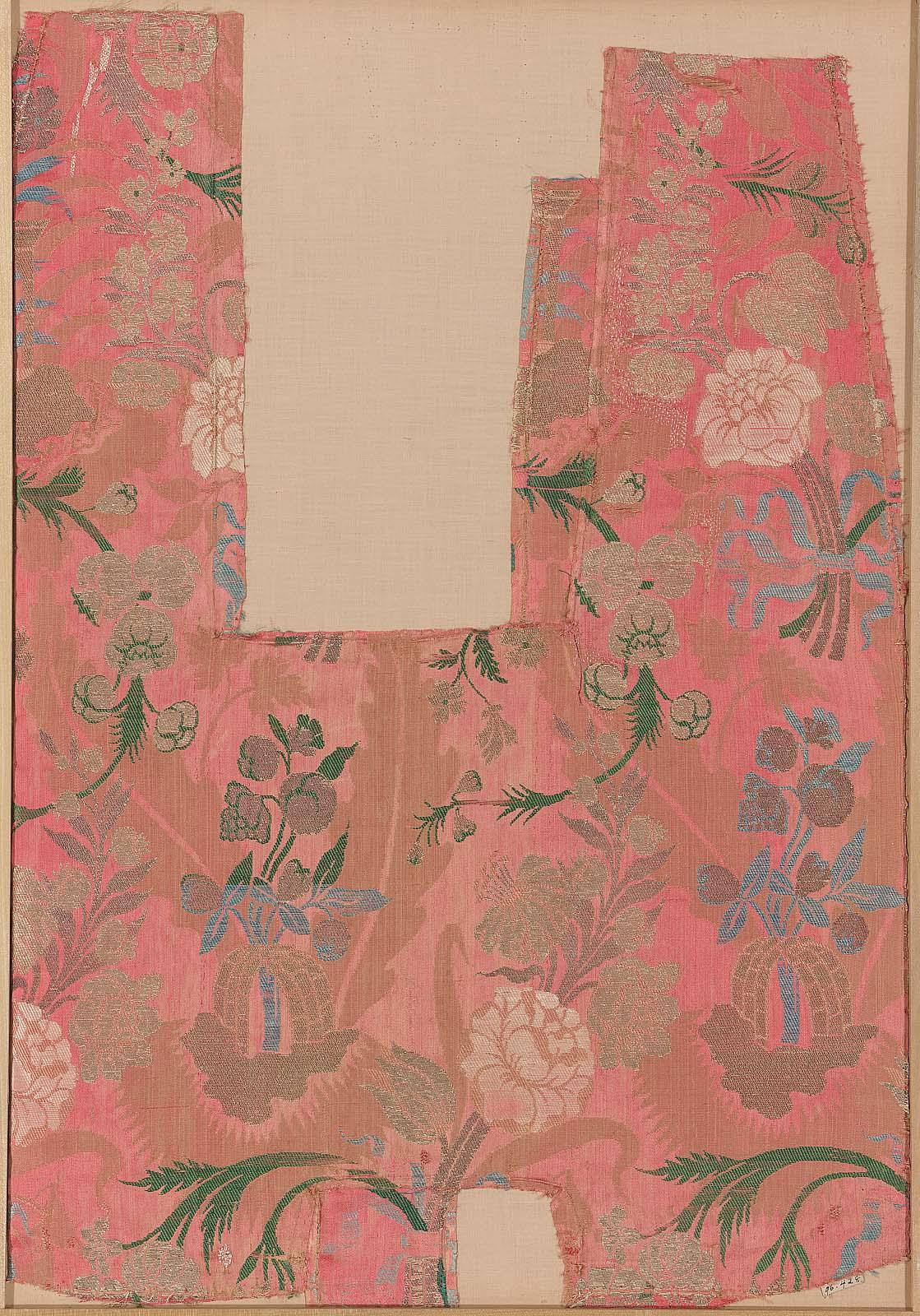
Brocaded silk, early 18th century, Continental Europe, MFA Boston 96.428
There are also lots of examples of a pinks in very similar shades, like this deep rose hue:
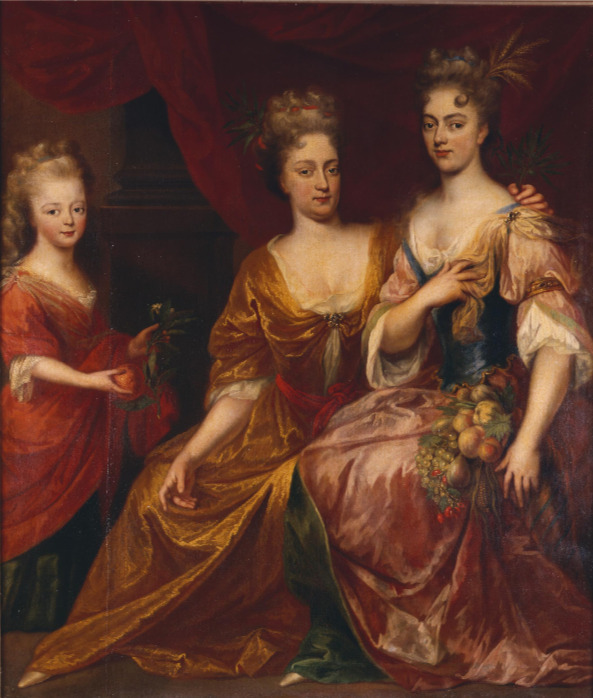
Lancelot Volders, Marie Louise of Hesse-Kassel with her sisters-in-law 1709
This stomacher features embroidery in similar colours:

Stomacher, 1700–20, MFA Boston, 43.1909
And heading even deeper into pink-red:
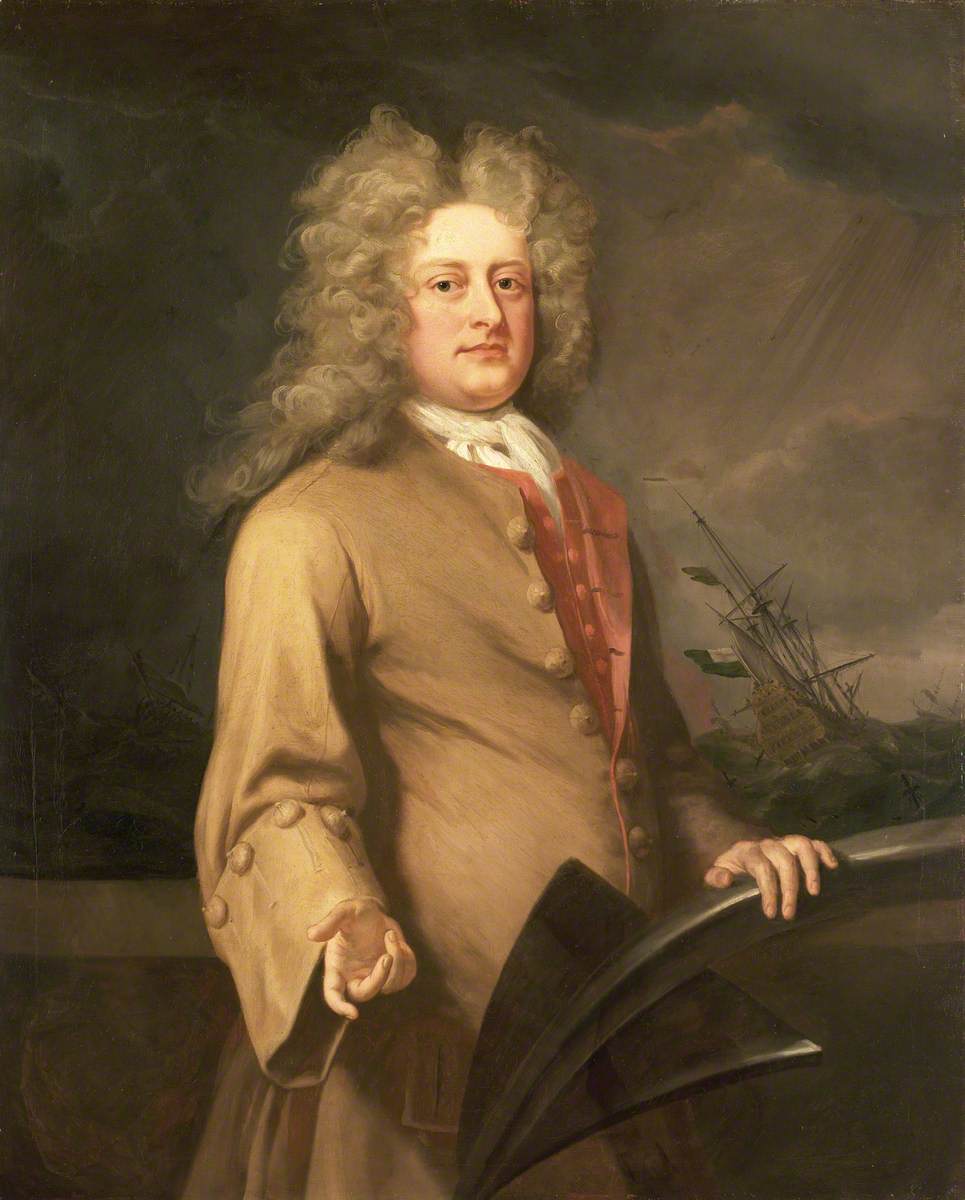
Michael Dahl I ; Rear-Admiral Basil Beaumont (1669-1703); National Maritime Museum; http://www.artuk.org/artworks/rear-admiral-basil-beaumont-16691703-173372
This proto-bizarre silk has a range of hues in the same family:
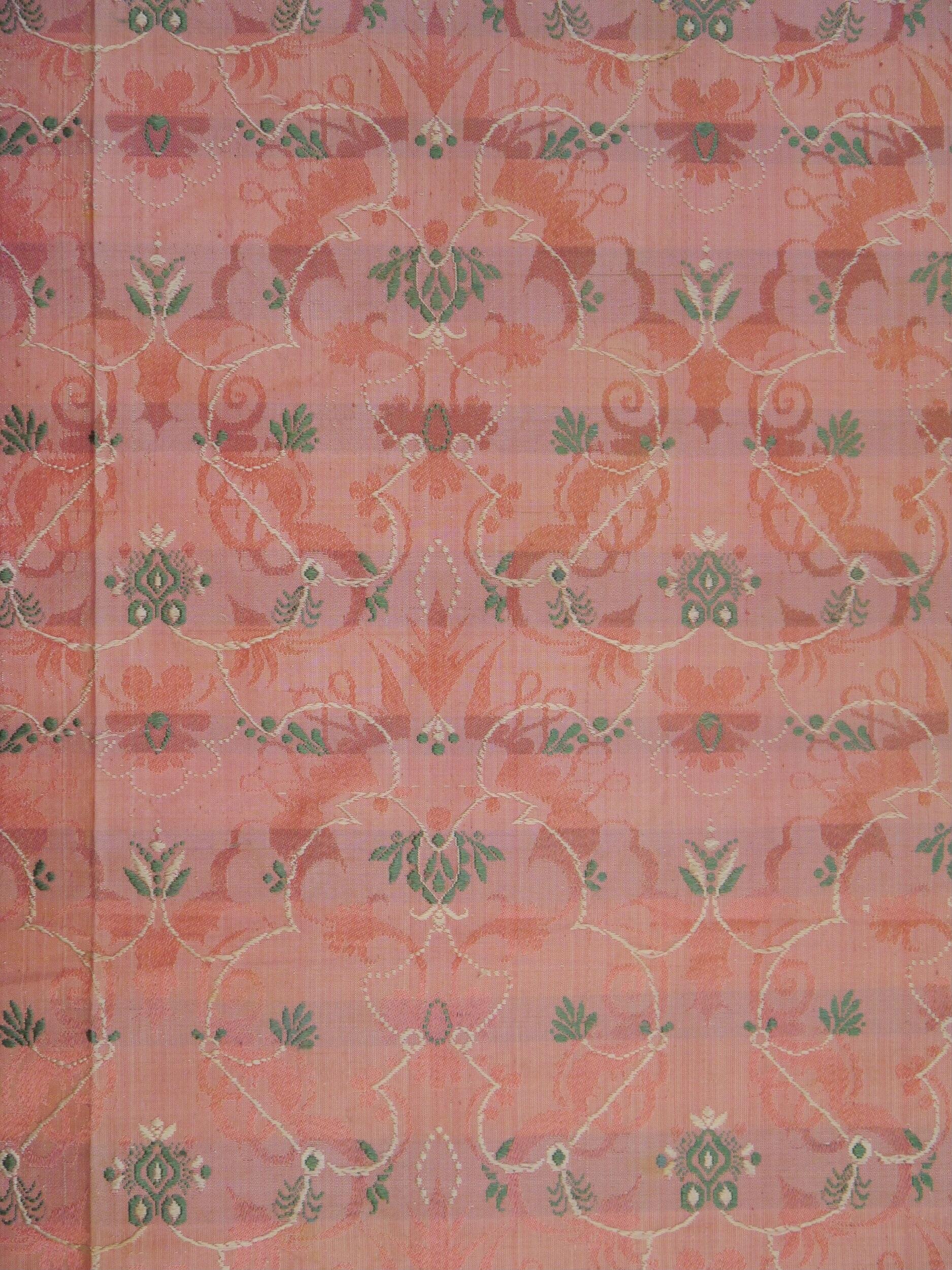
Woven silk, damask lancé with the liseré effects of the ground weft, 1675-1700, French or Italian; proto-bizarre; green and white selvedge Victoria and Albert Museum
As an example of how vivid some ca. 1700 pinks were, here are two portraits and a bag in striking pinks:
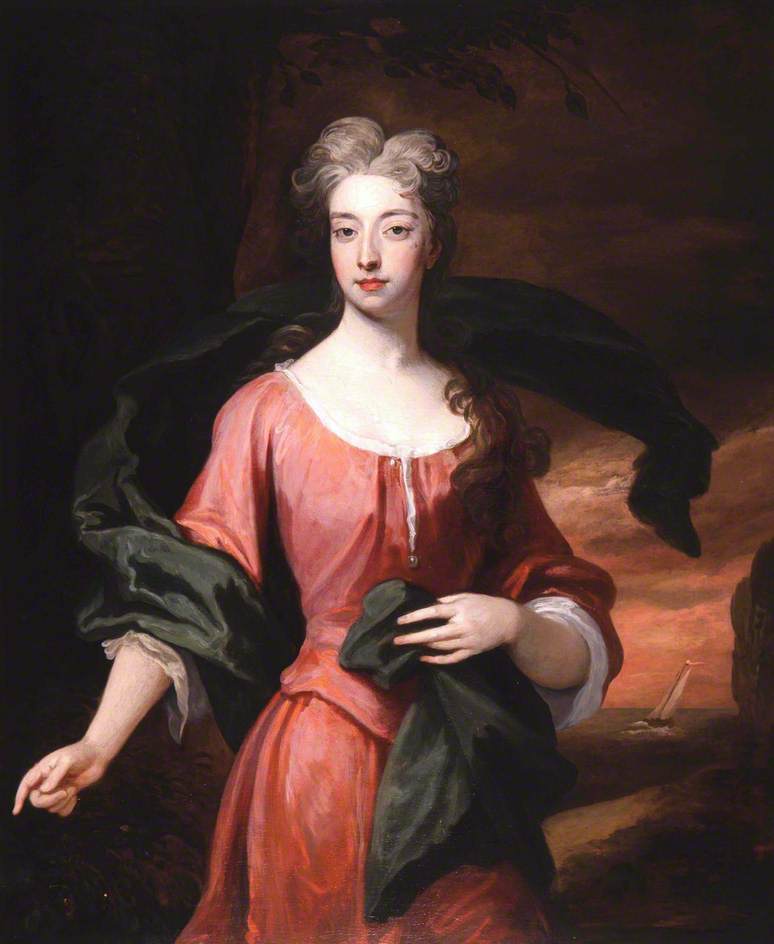
Godfrey Kneller, Portrait of Elizabeth Southwell, 1705, (c) Down County Museum; Supplied by The Public Catalogue Foundation

Nicolas Walraven van Haften – Portrait of a Family in an Interior – 1982.139 – Museum of Fine Arts Boston, 1700
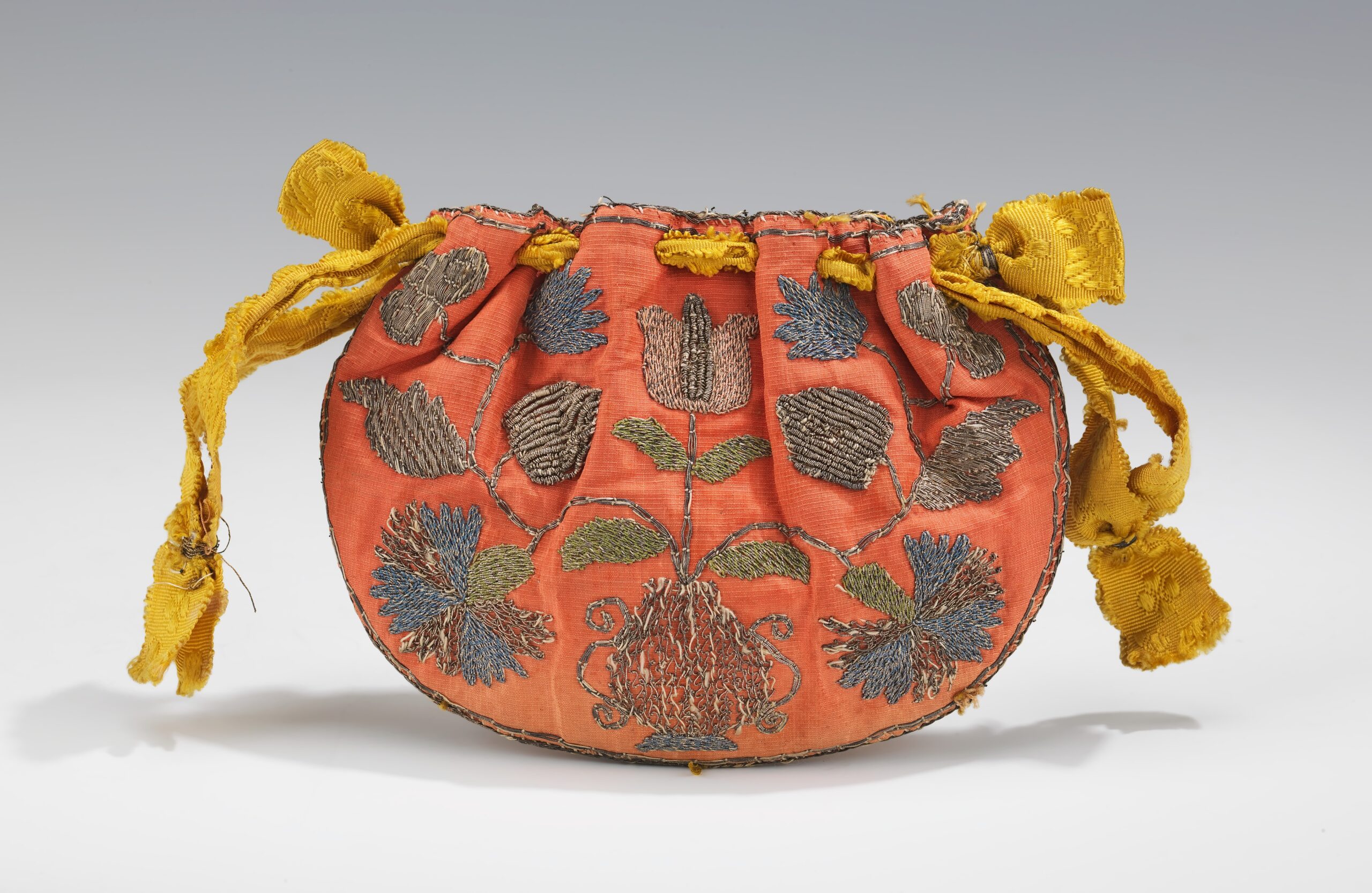
Pouch, early 18th century, Russian, silk, metal, Brooklyn Museum Costume Collection at The Metropolitan Museum of Art 2009.300.1723
And we’ll finish with a portrait featuring two different shades of pink, and which may be one of the cutest 18th century royal portraits I’ve ever seen:
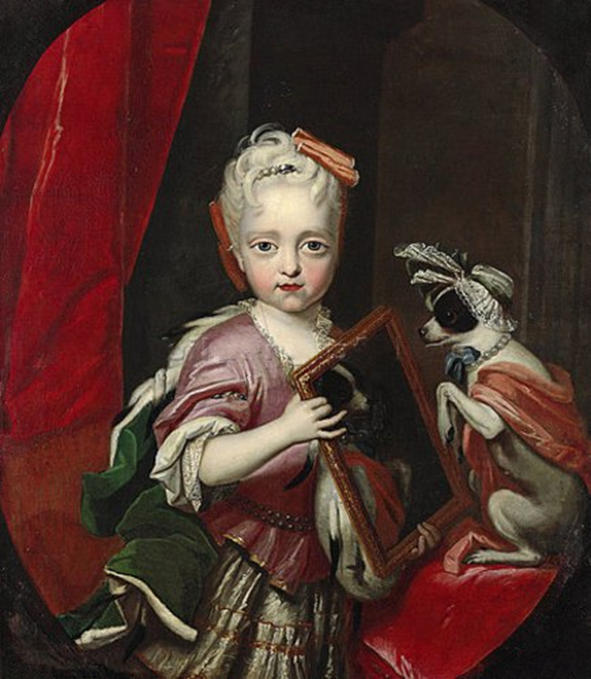
Archduchess Maria Josepha as a child – Hannover, Landesmuseum 1704-5
